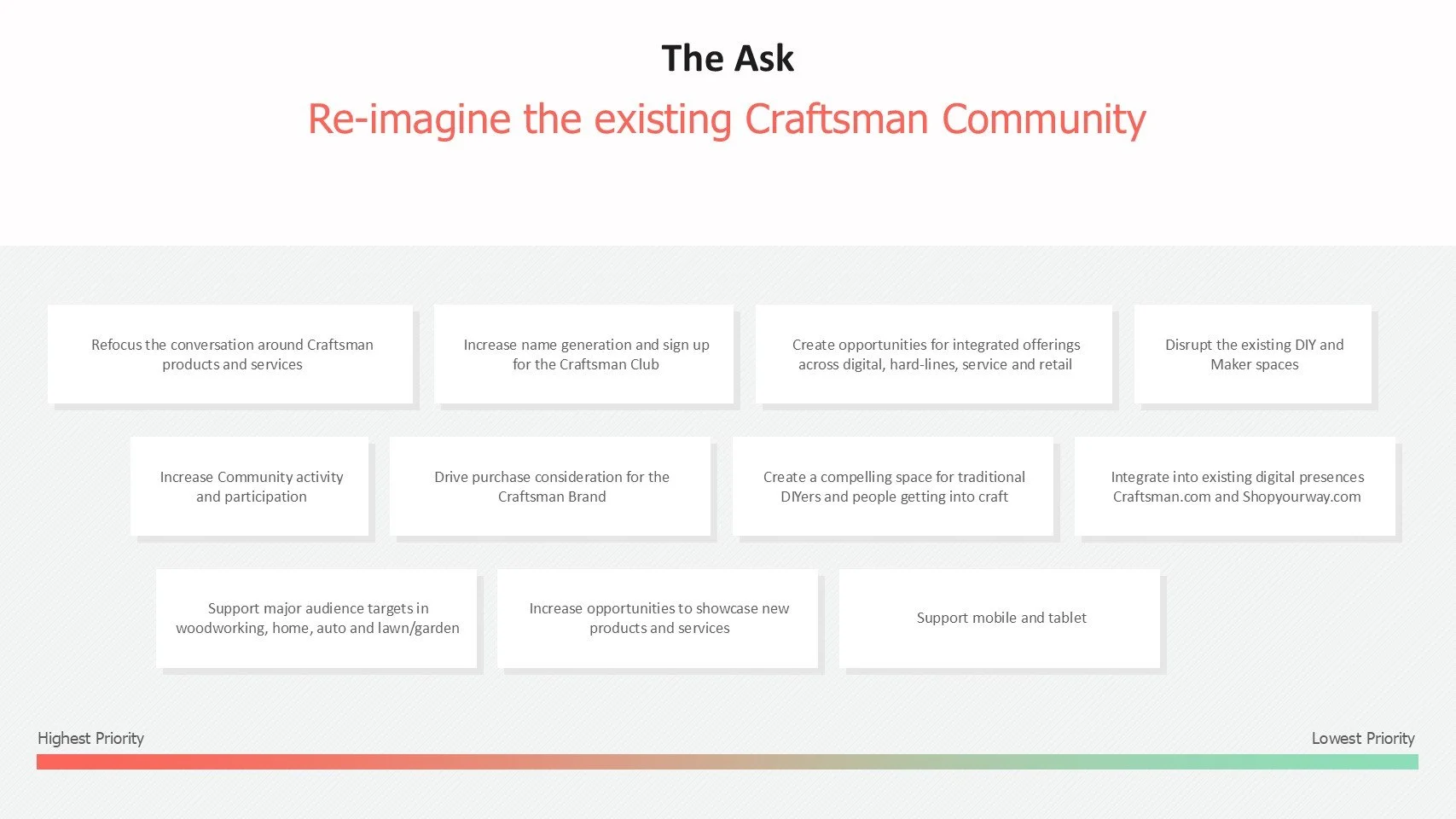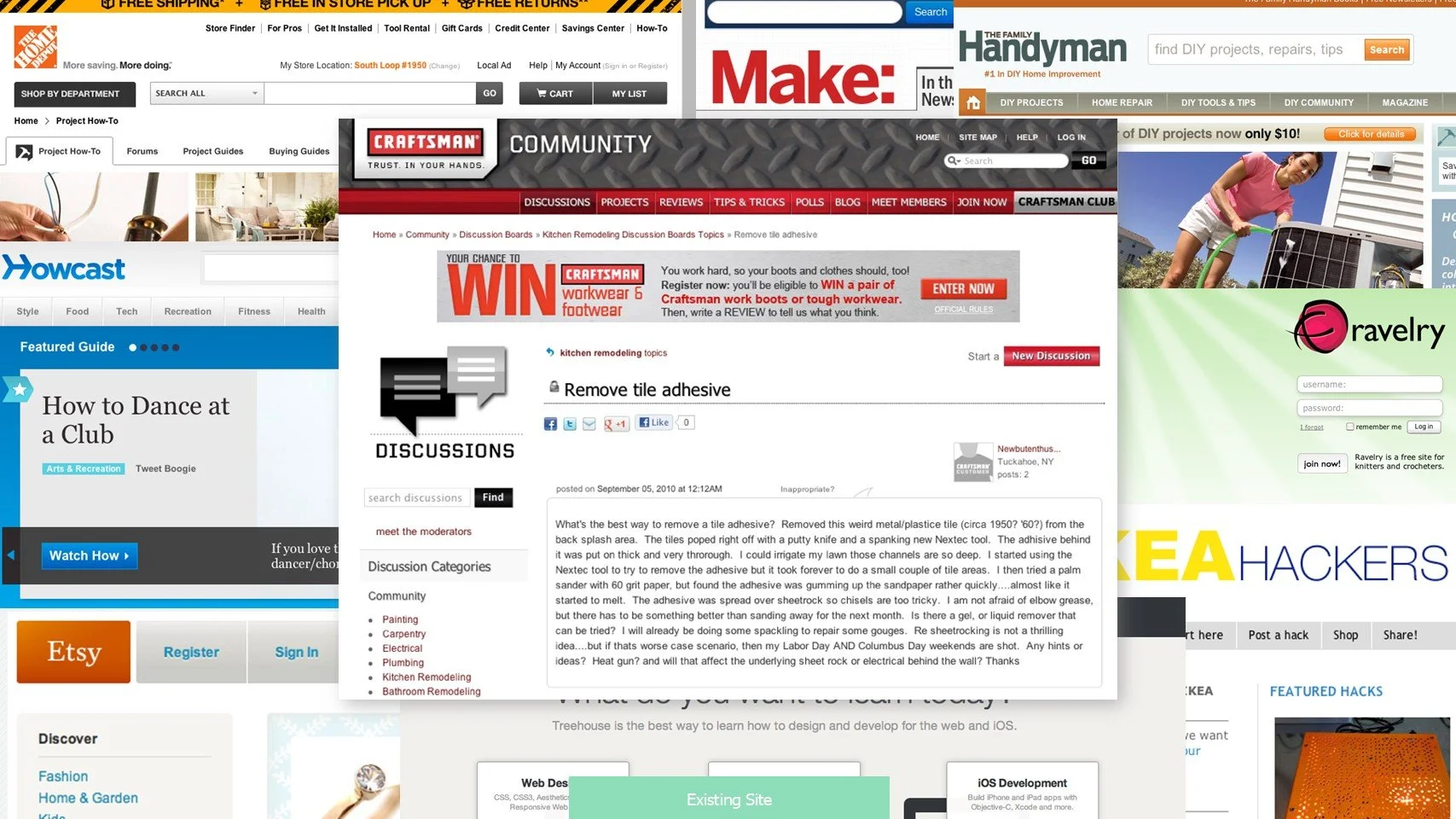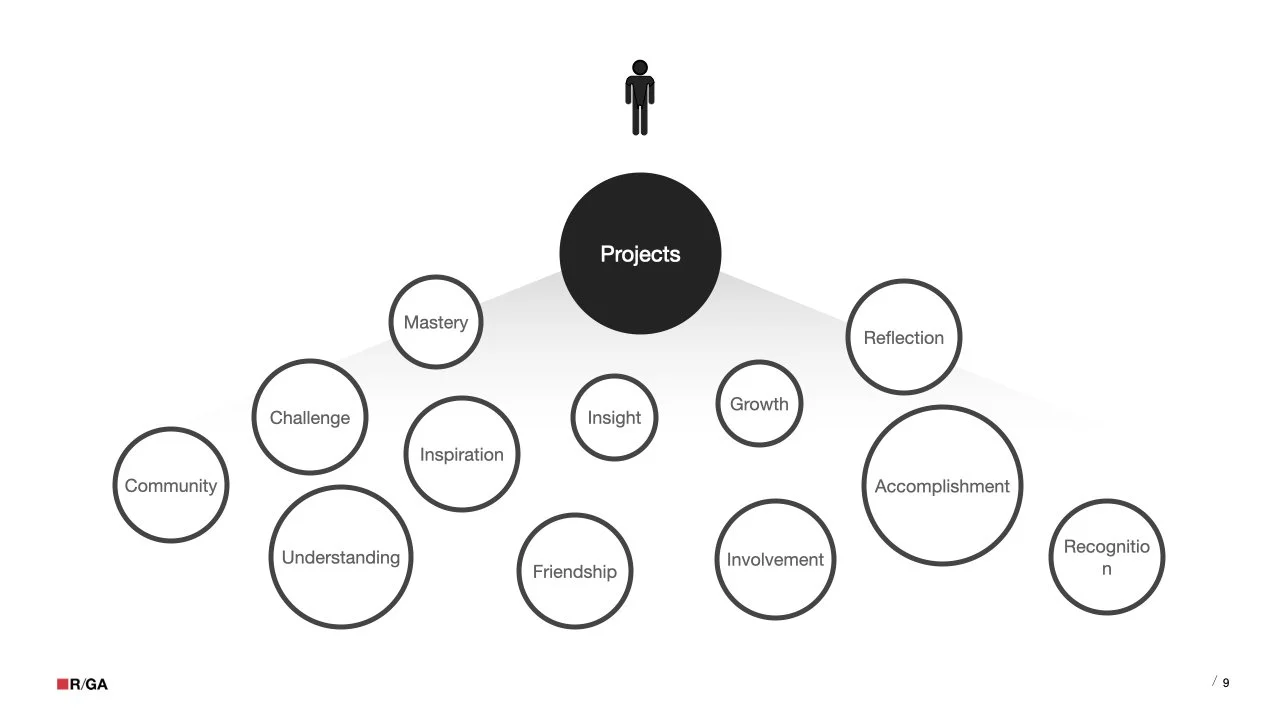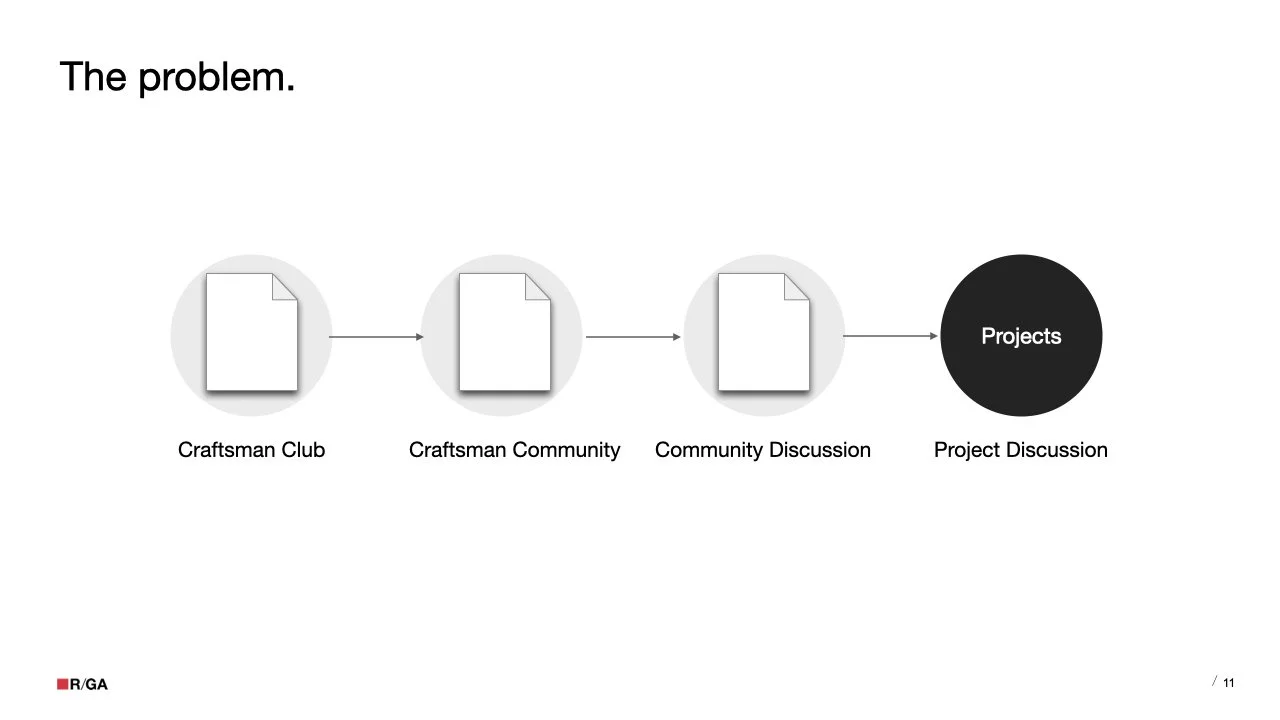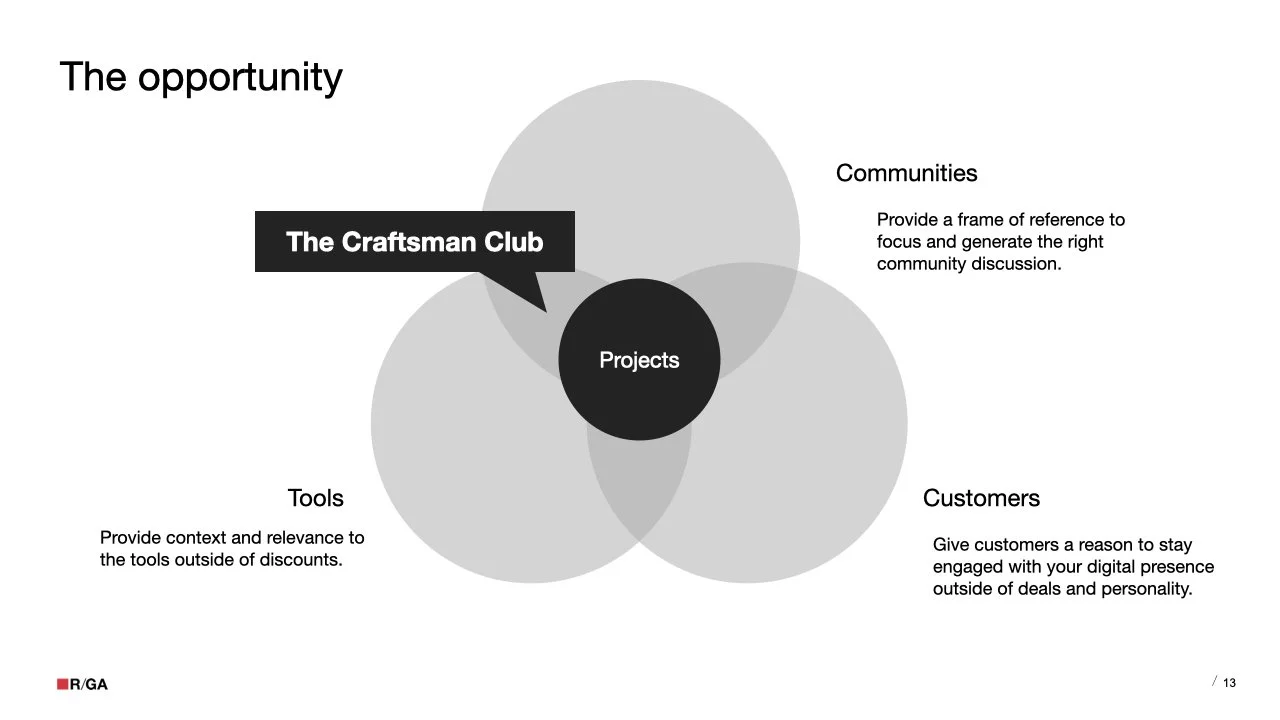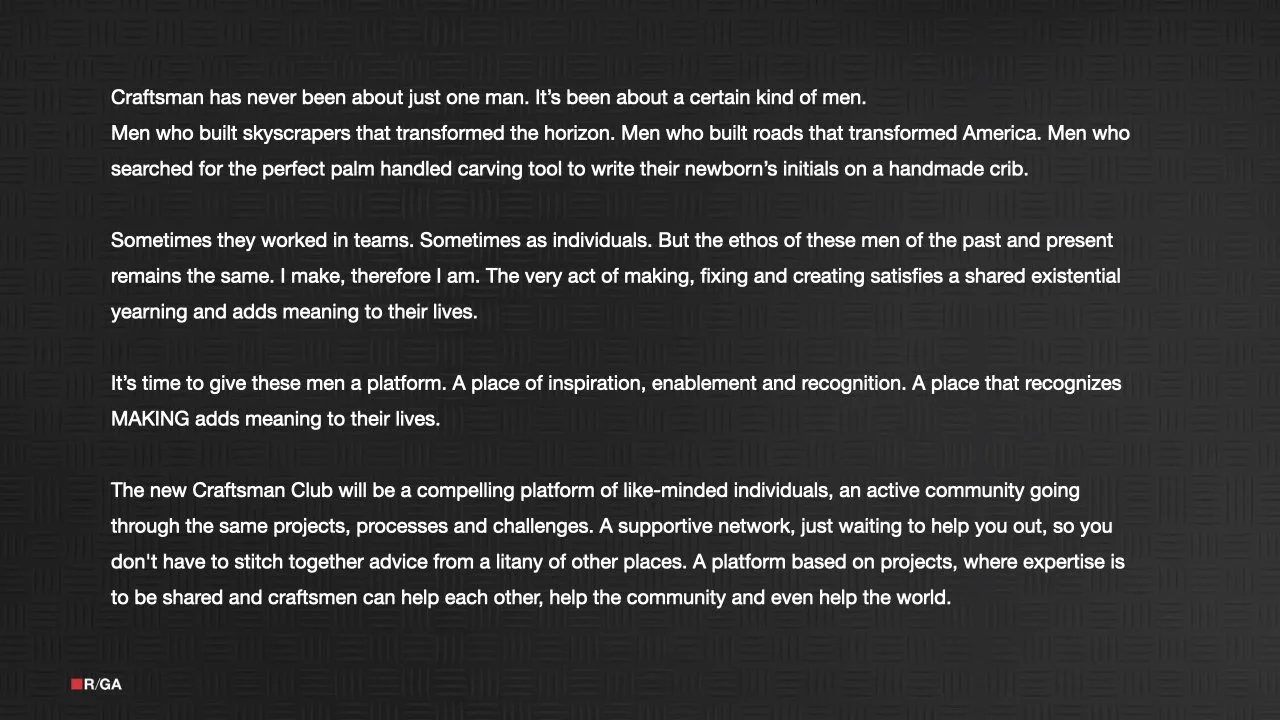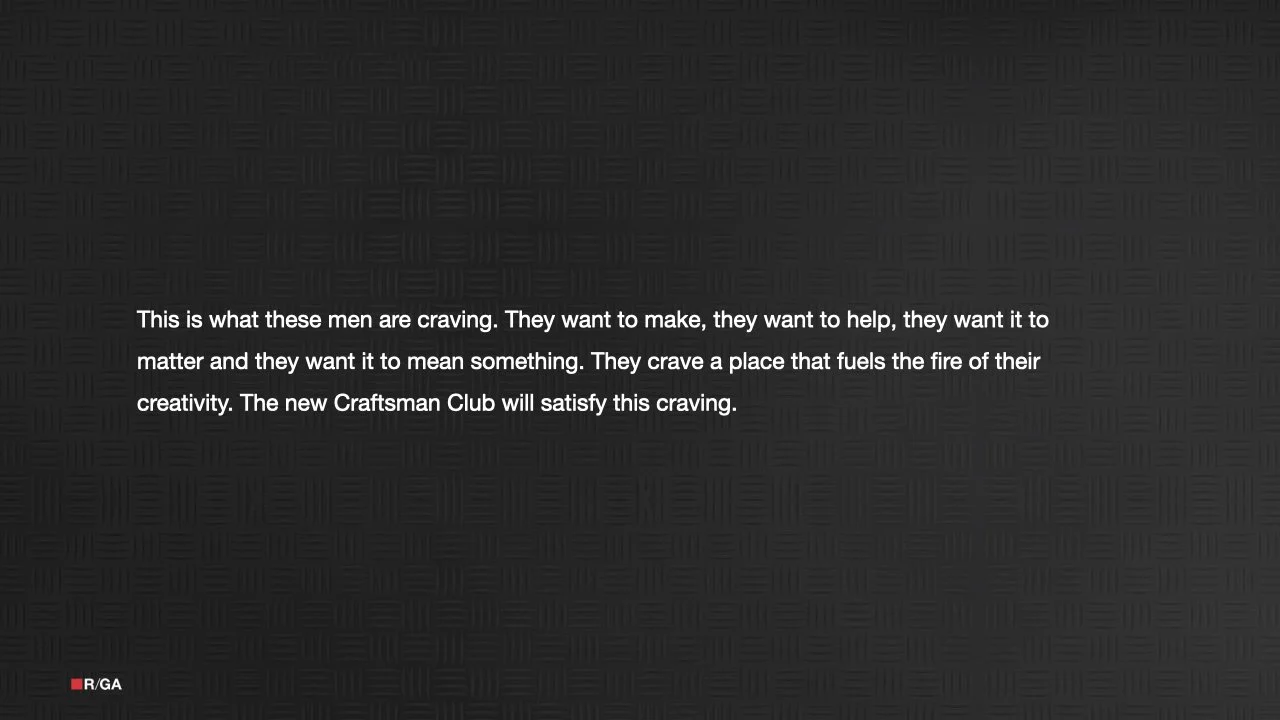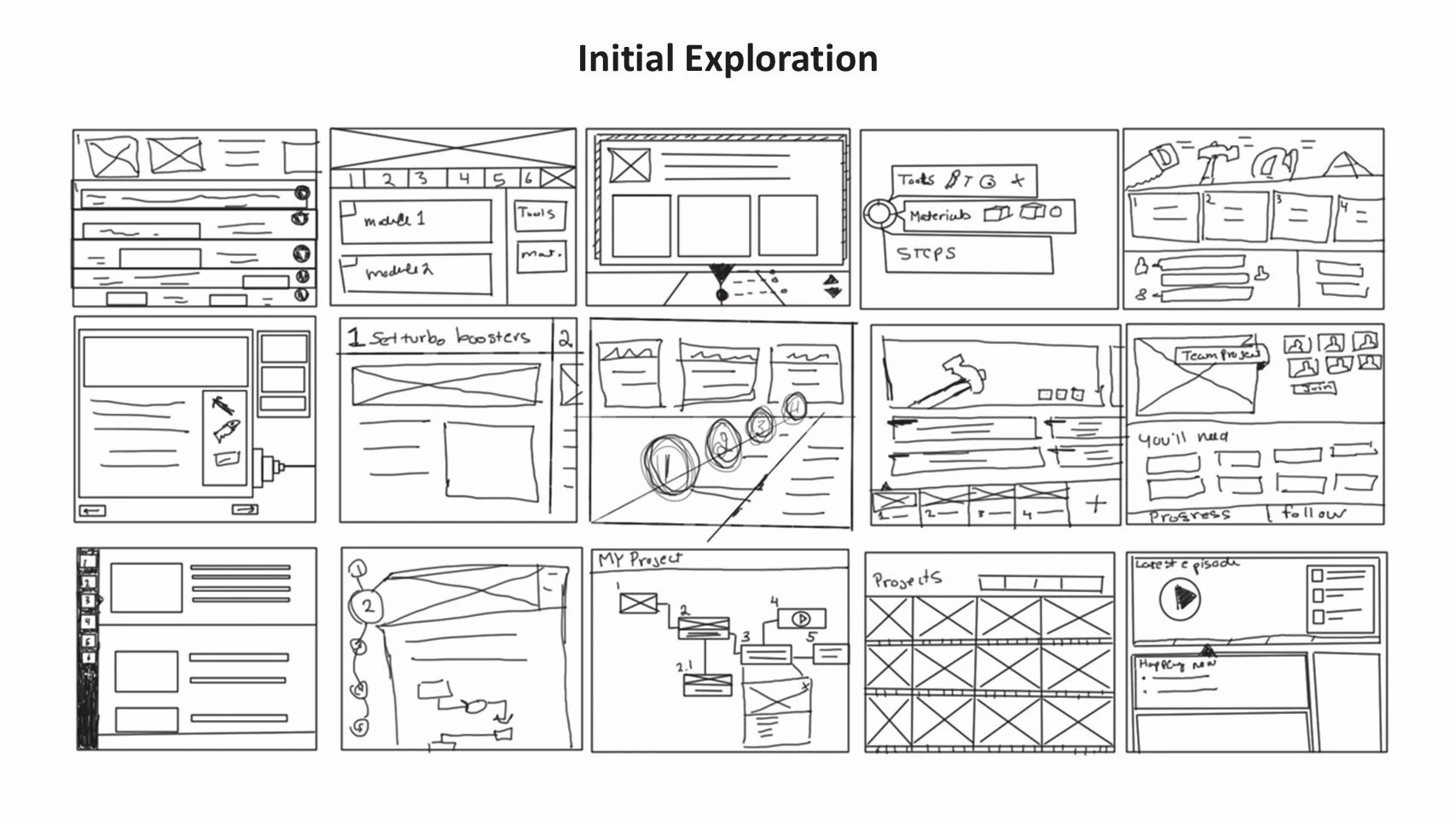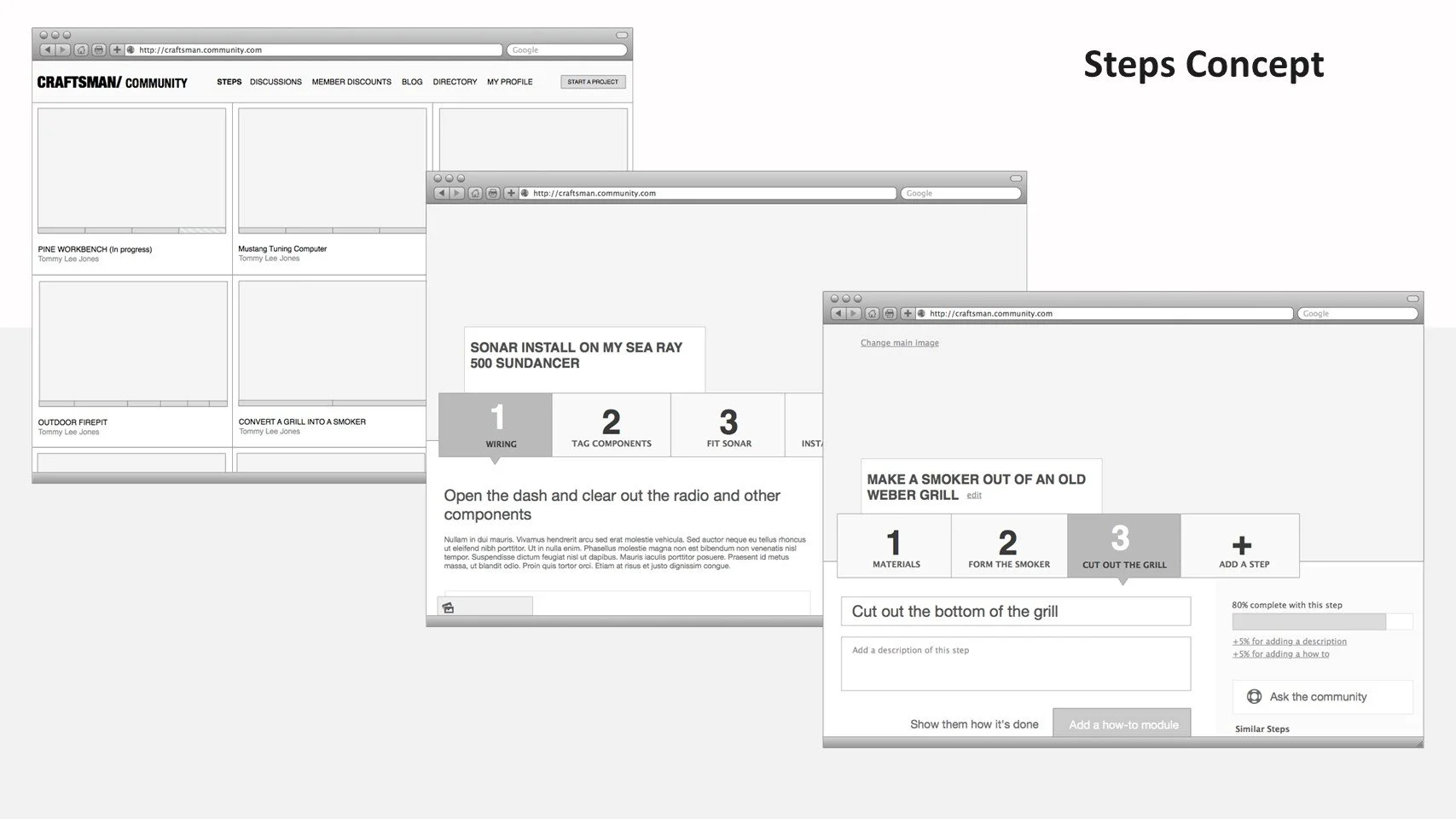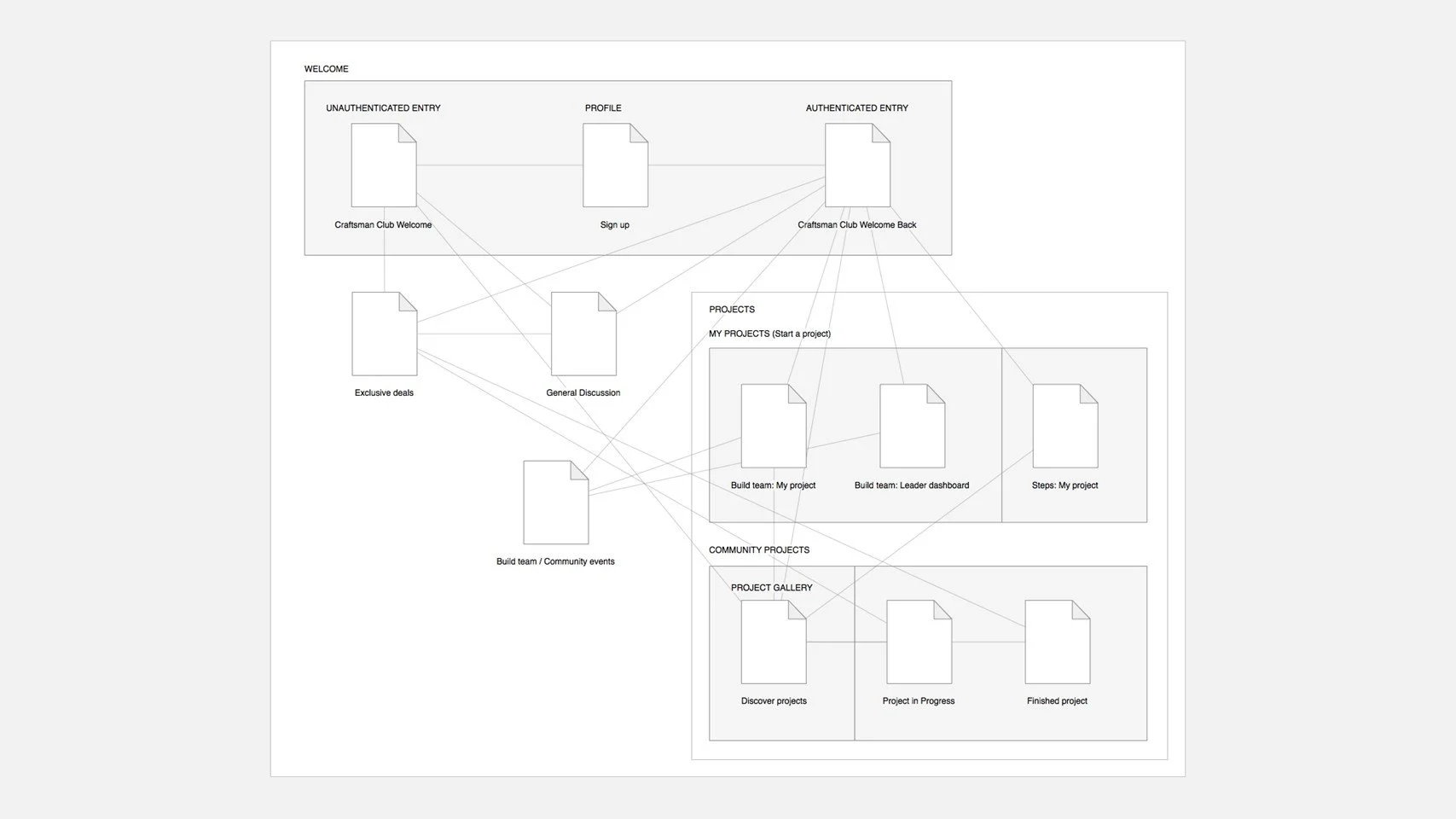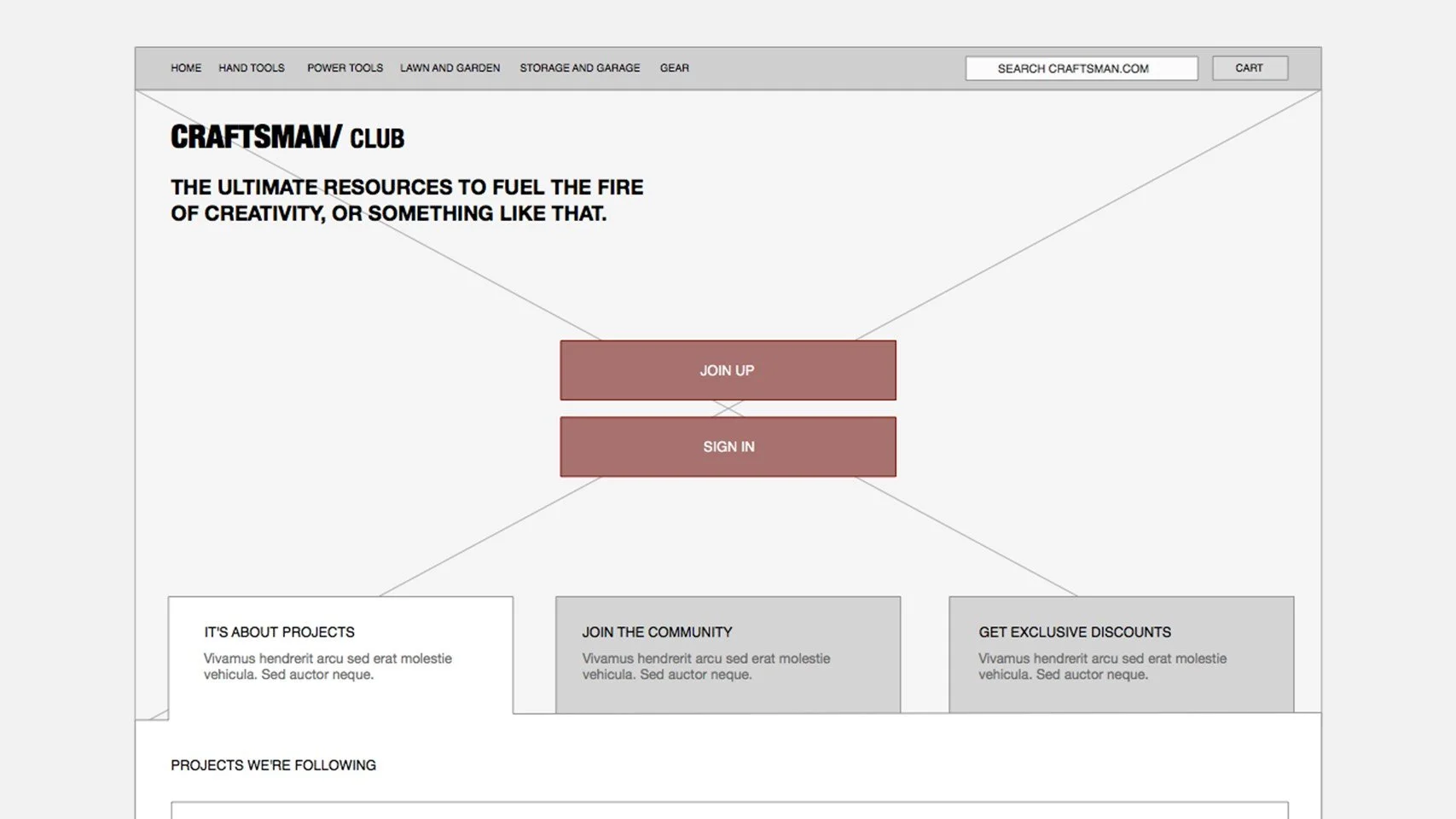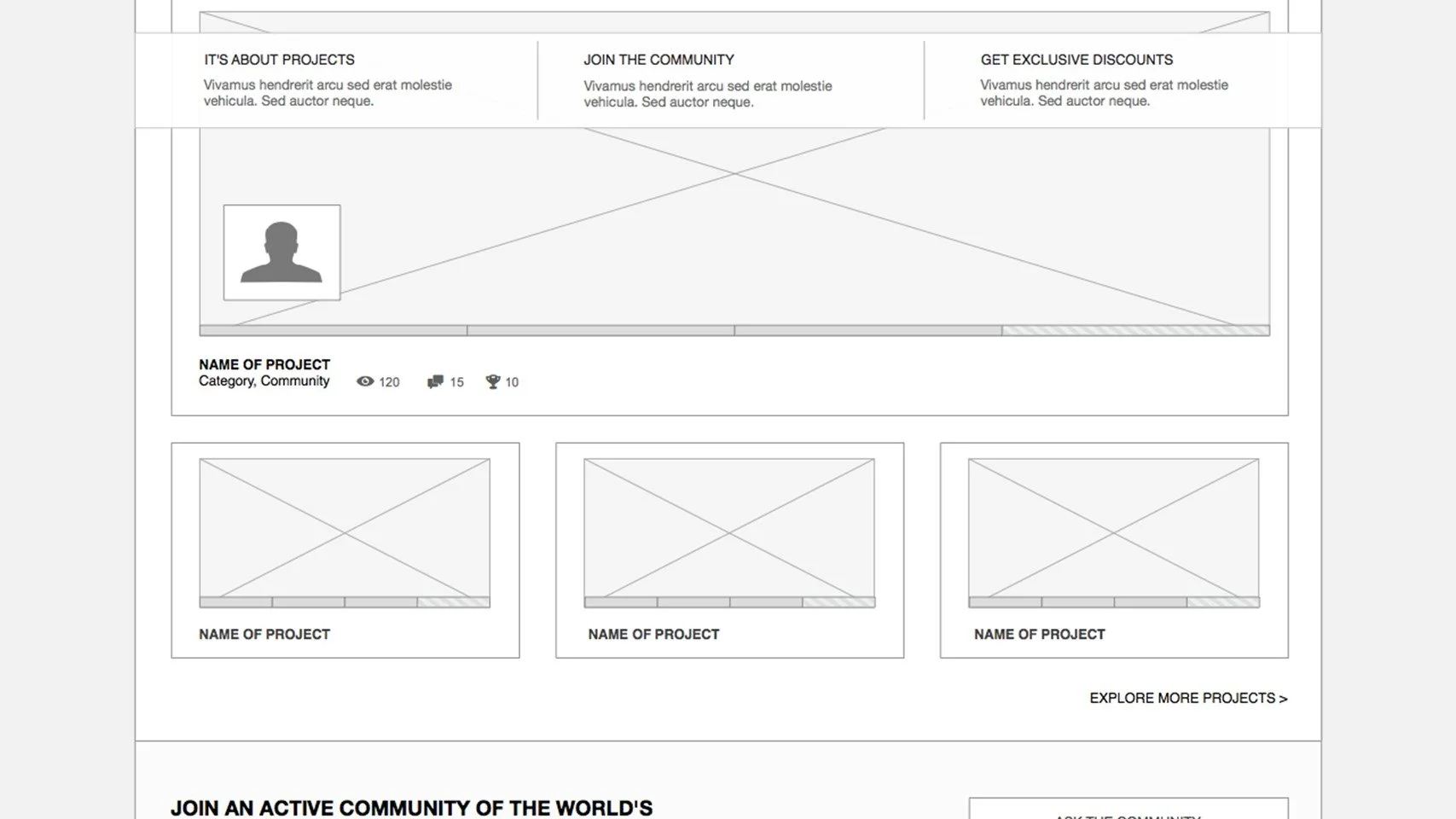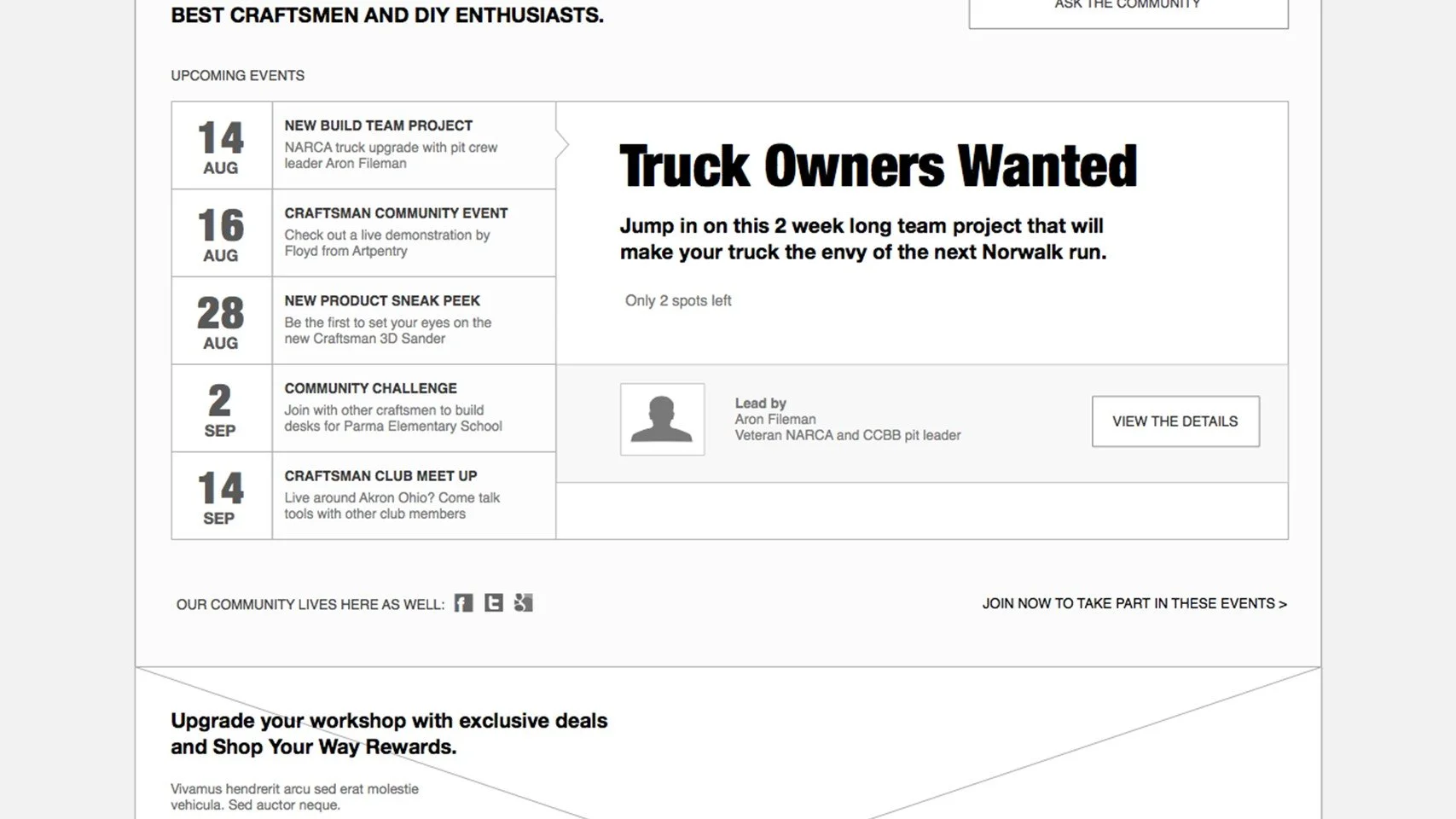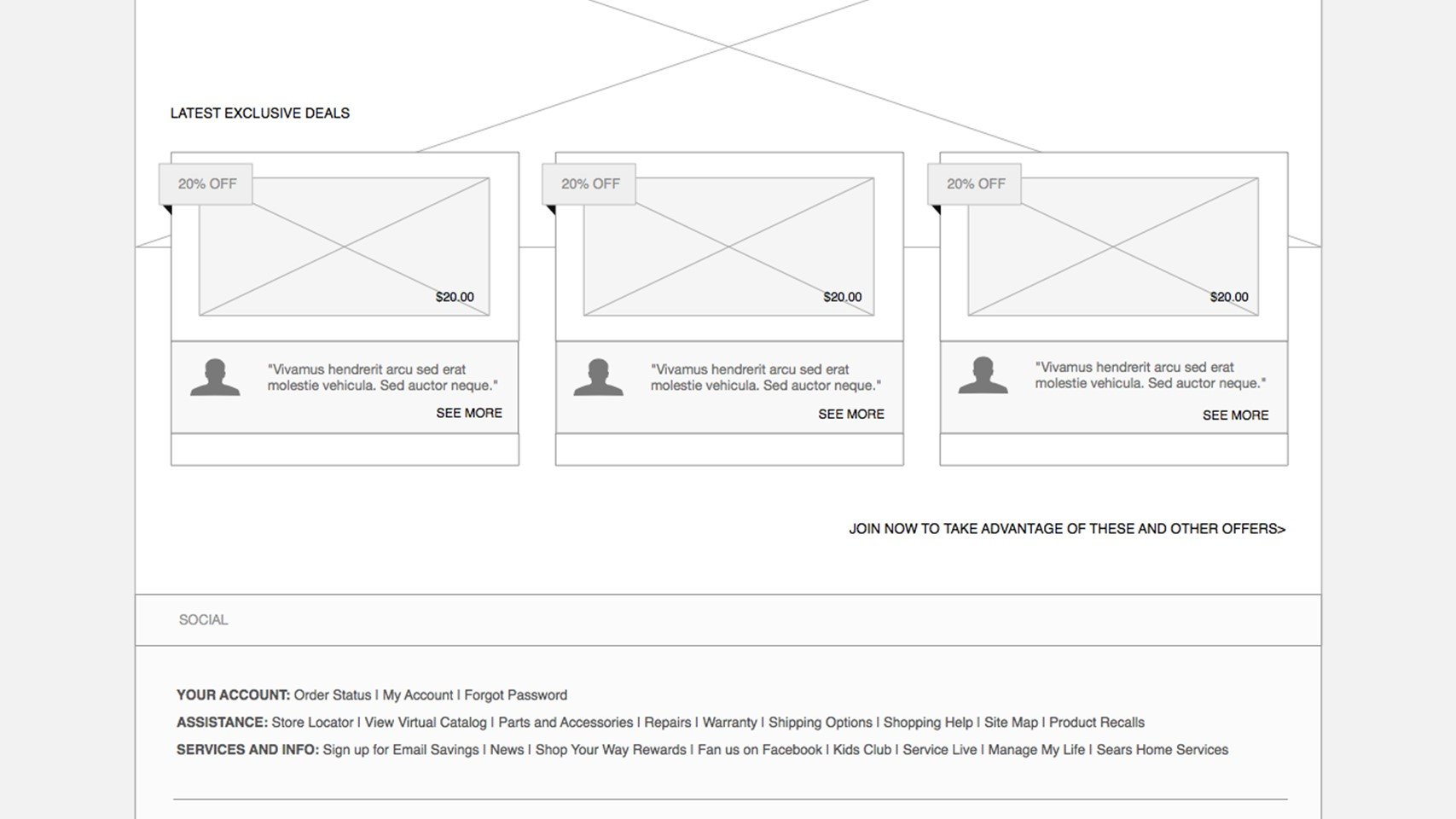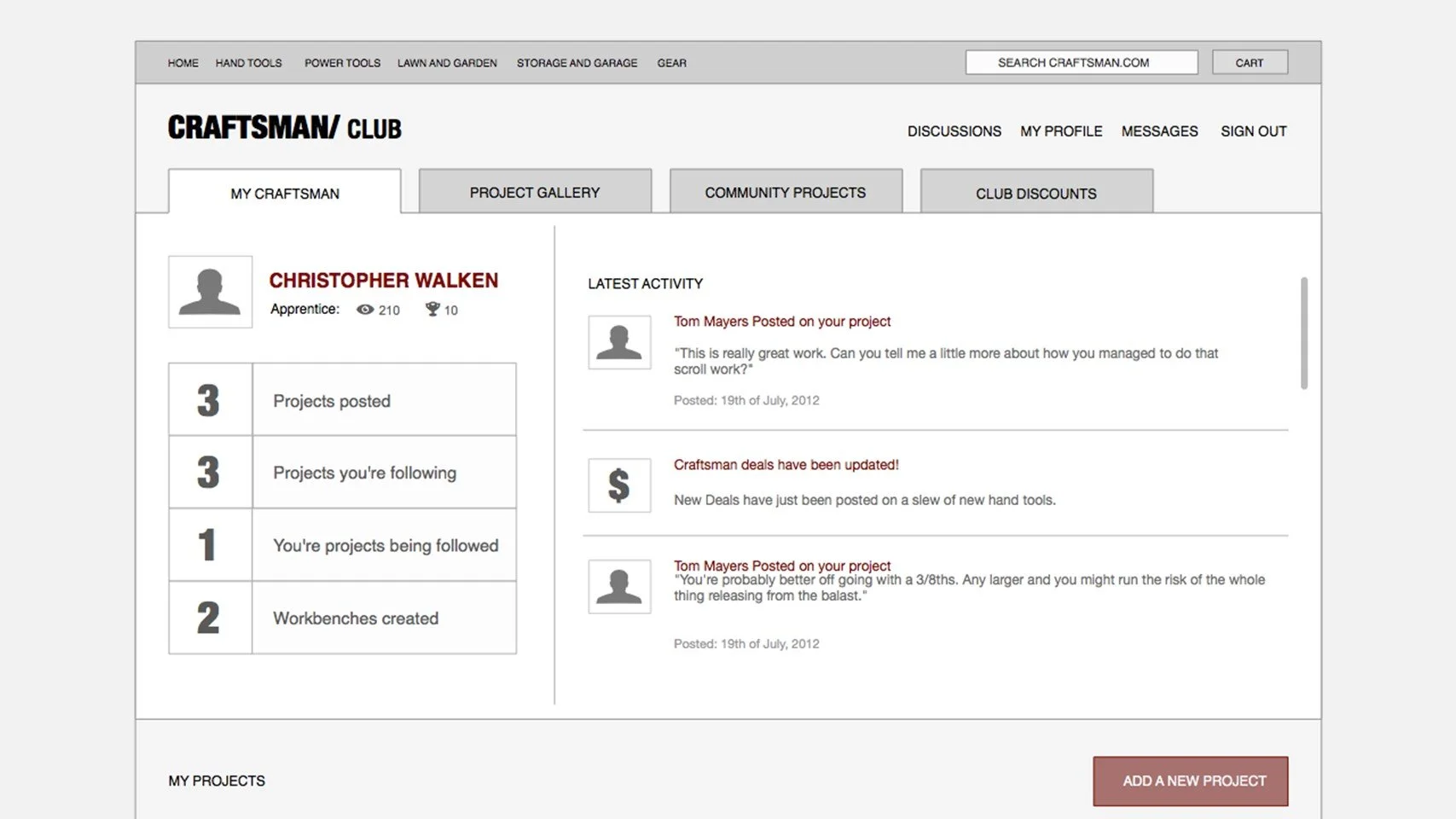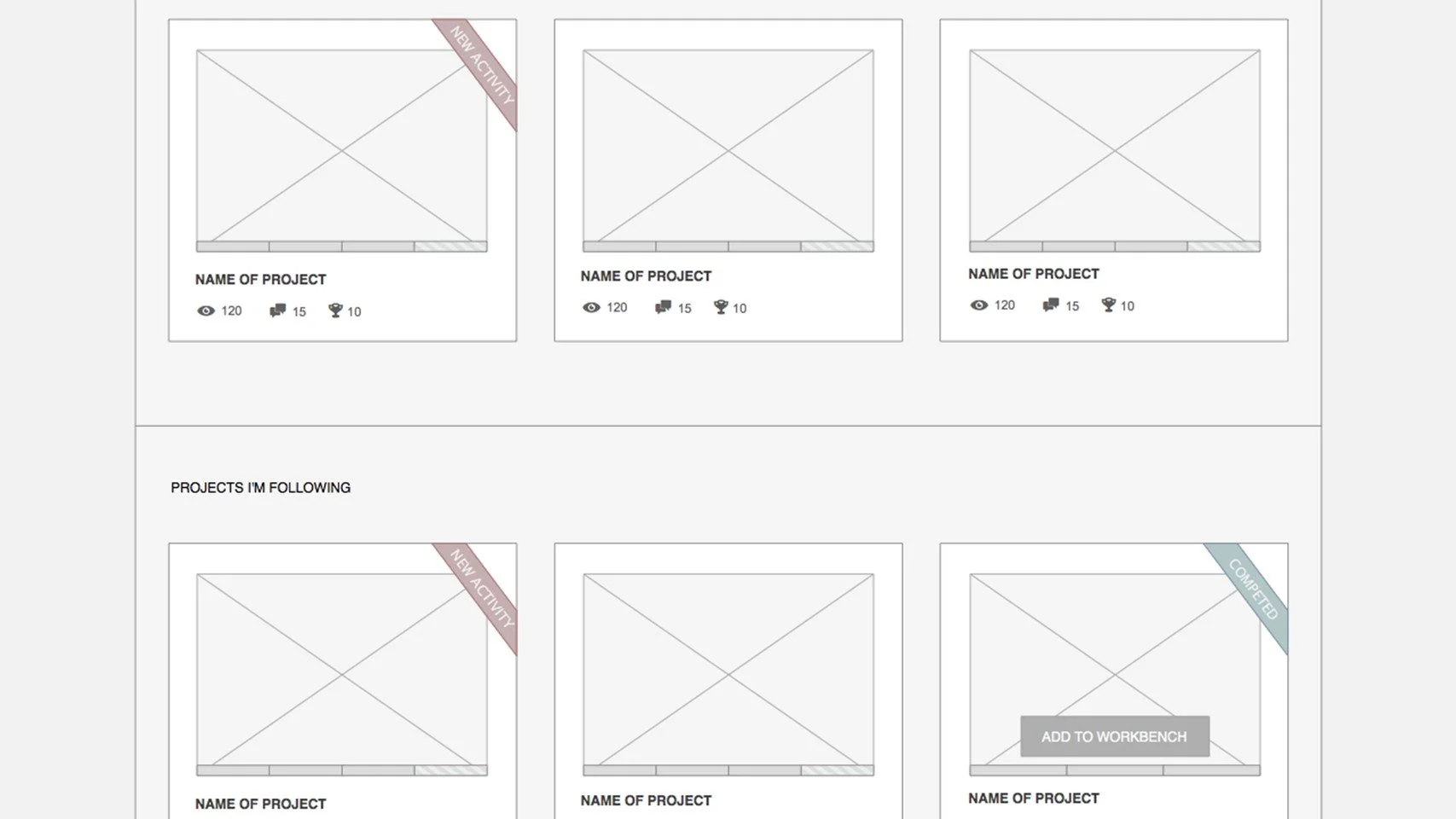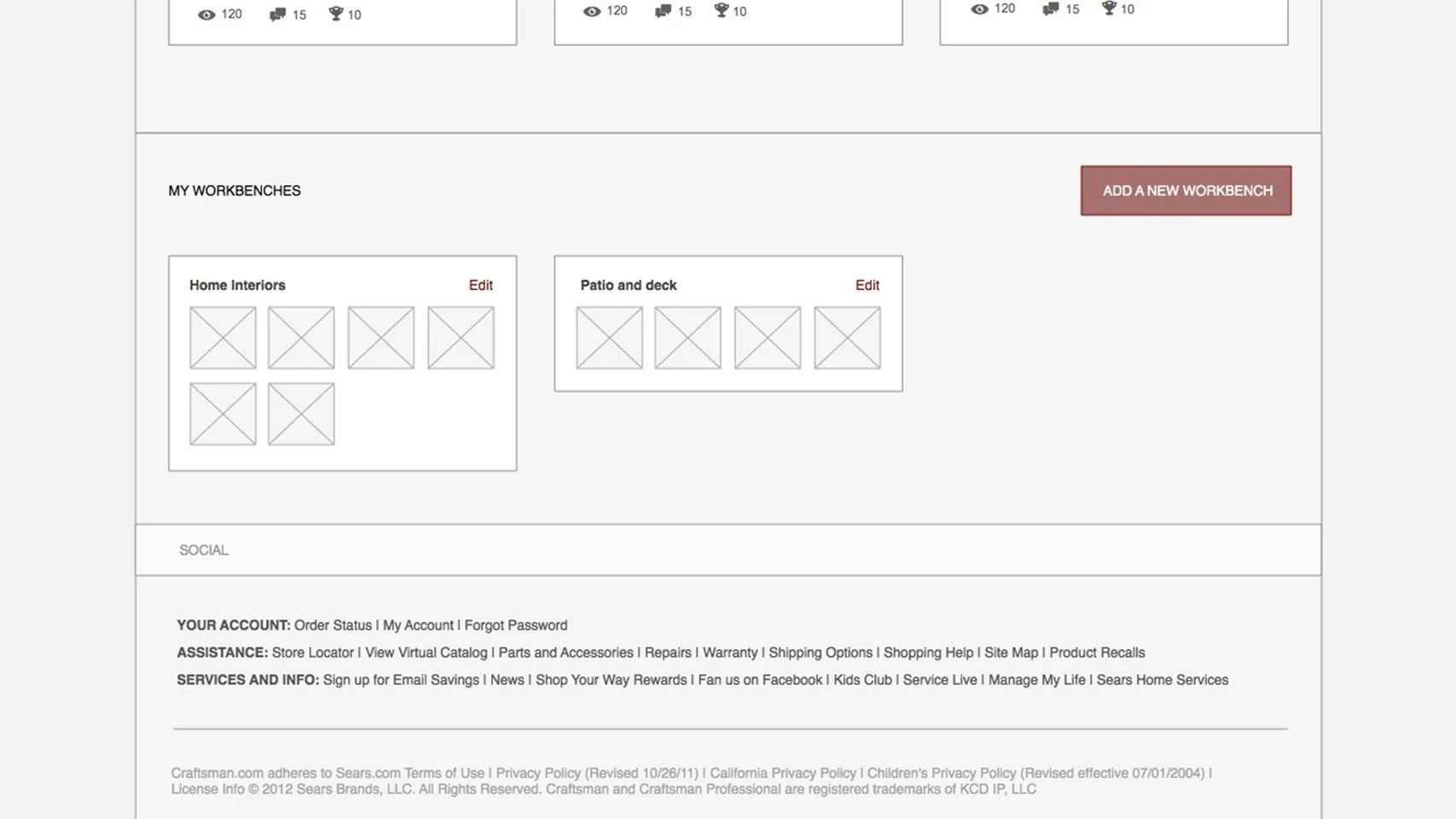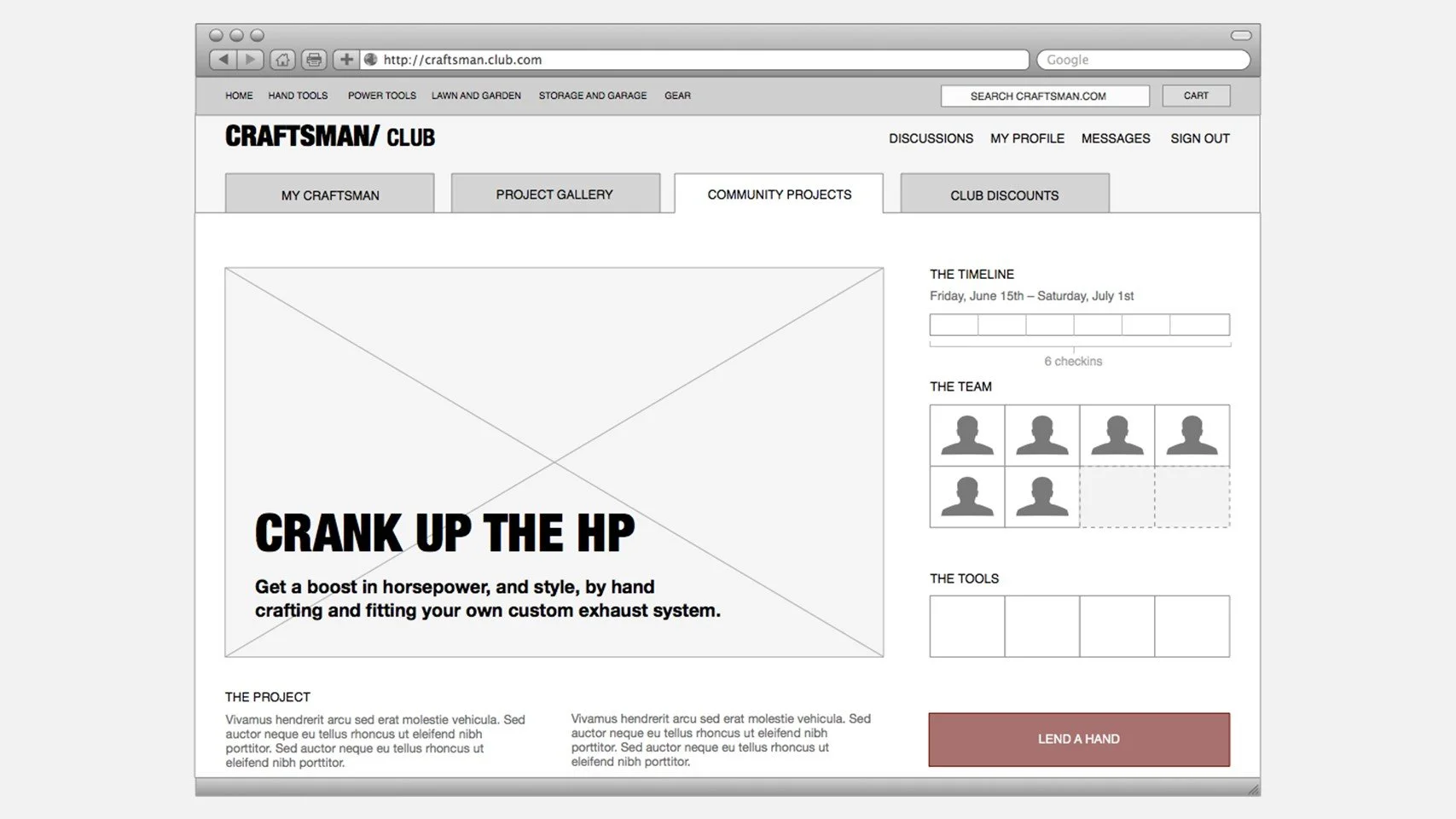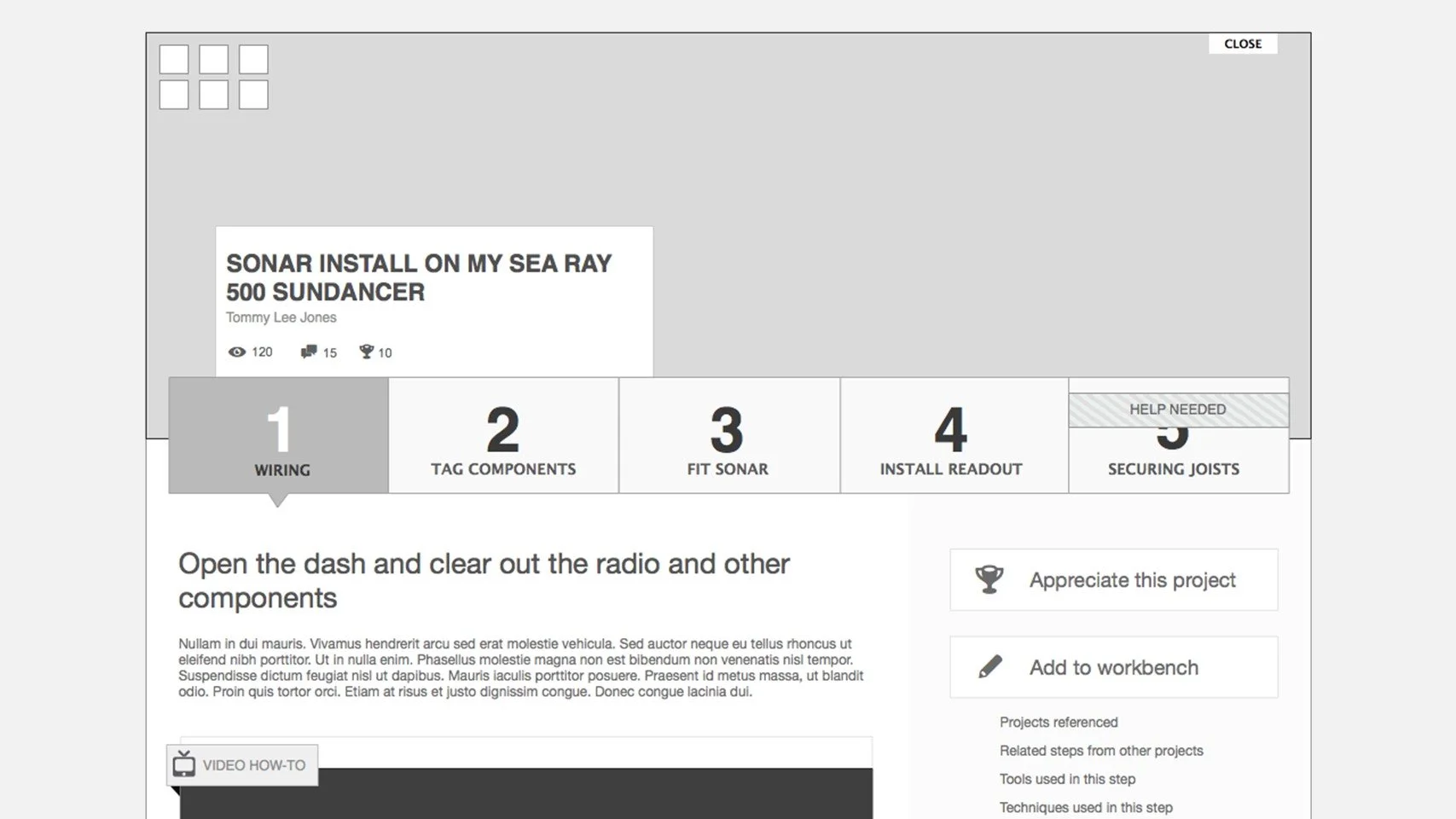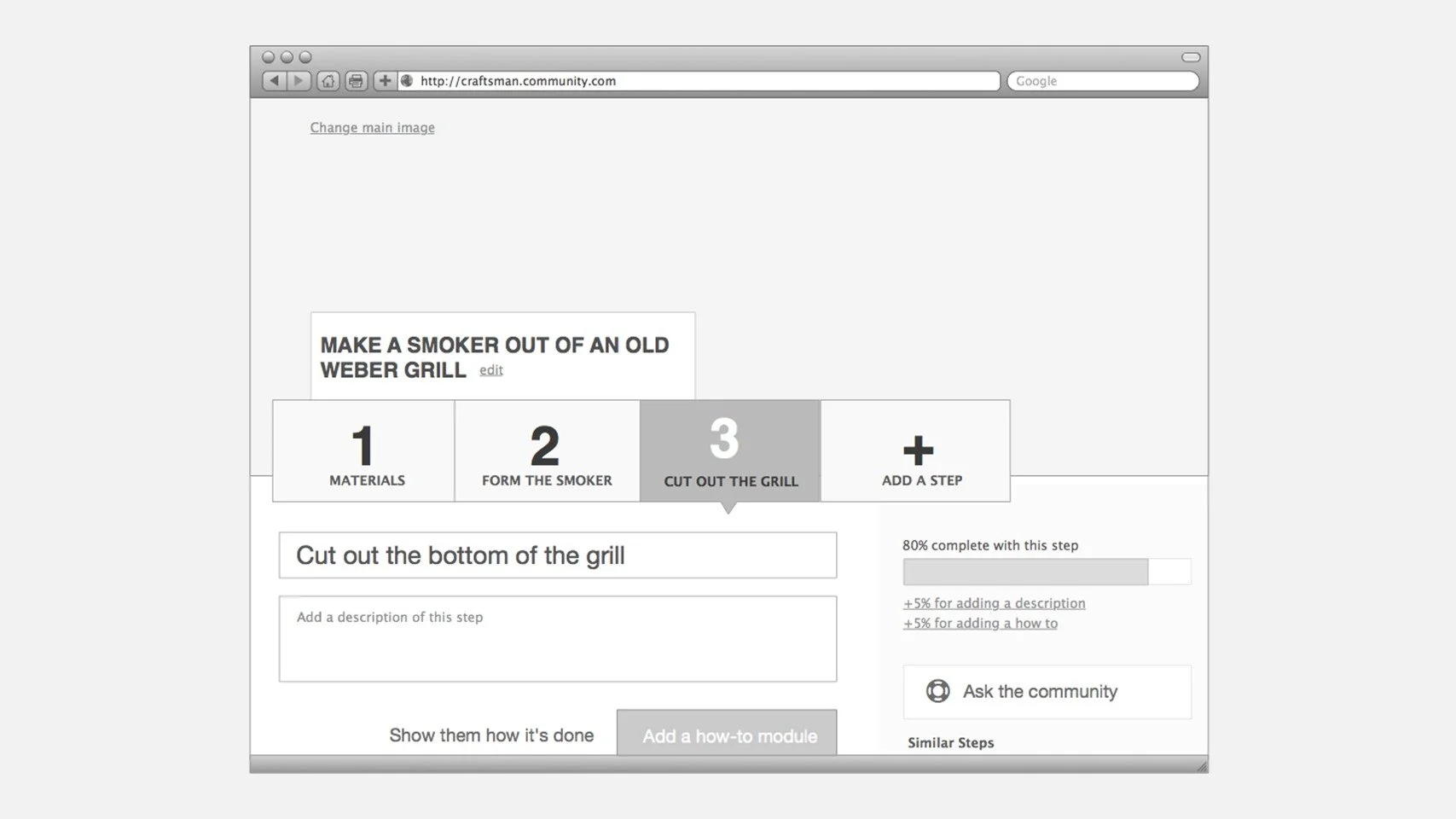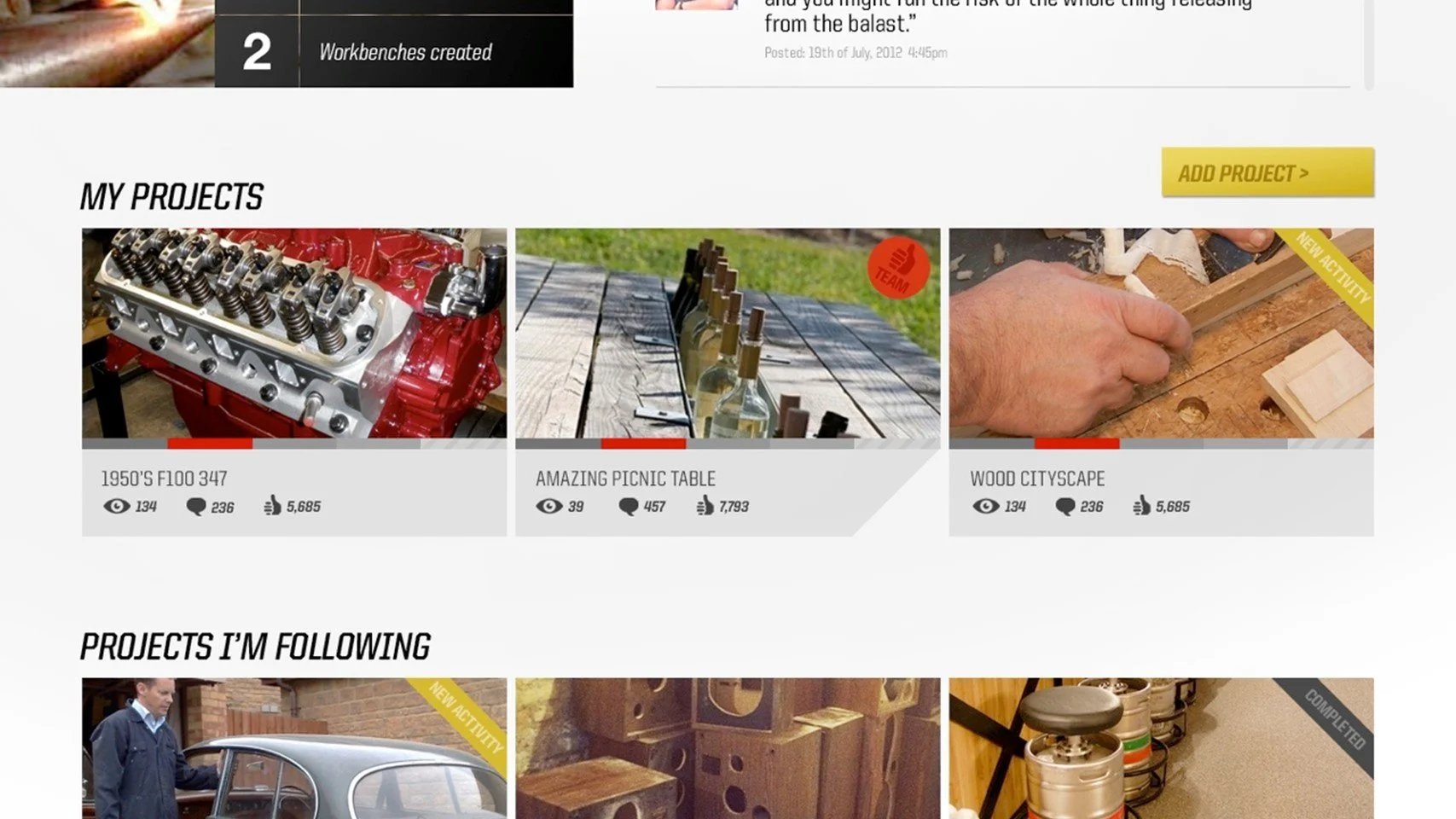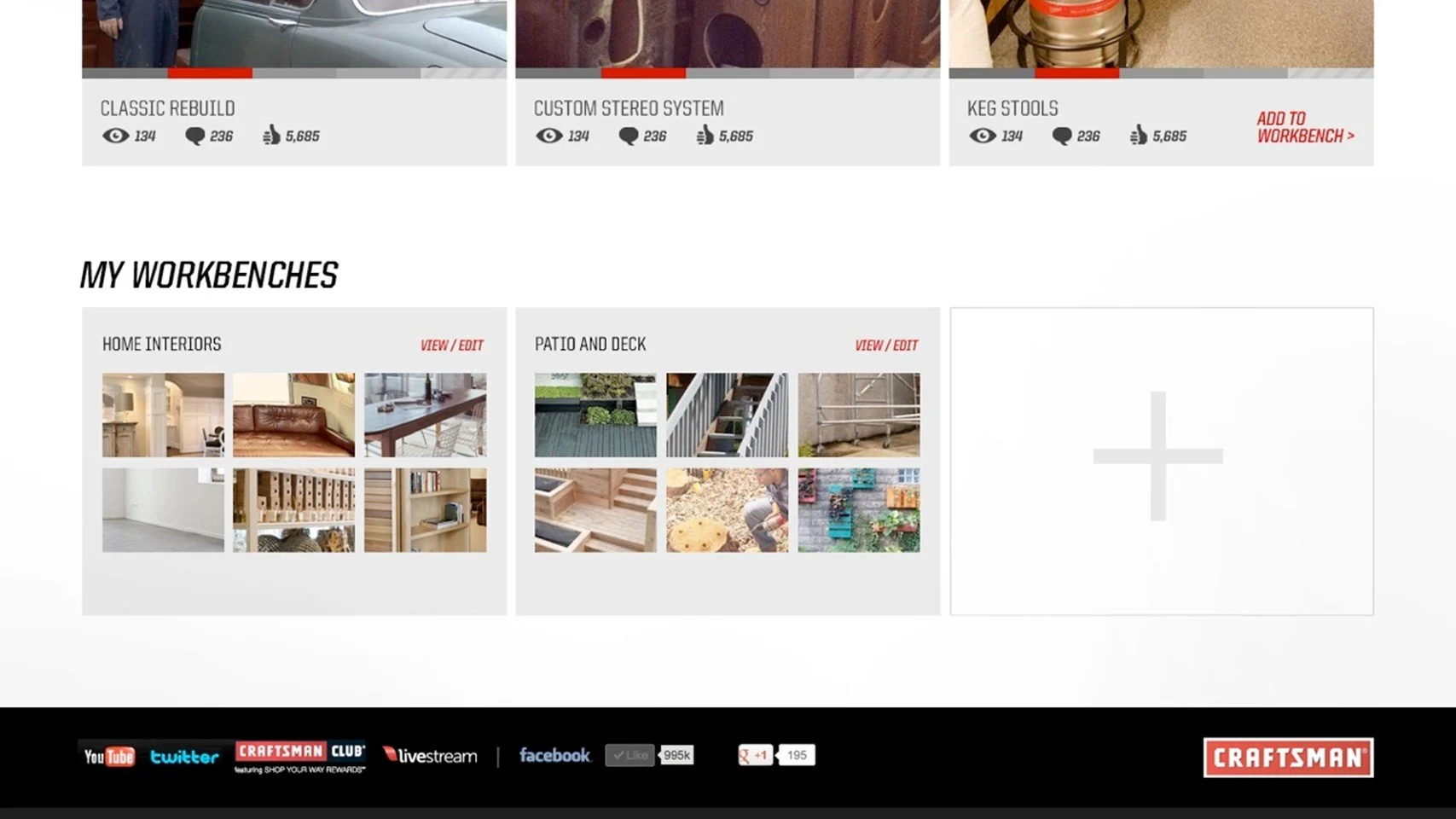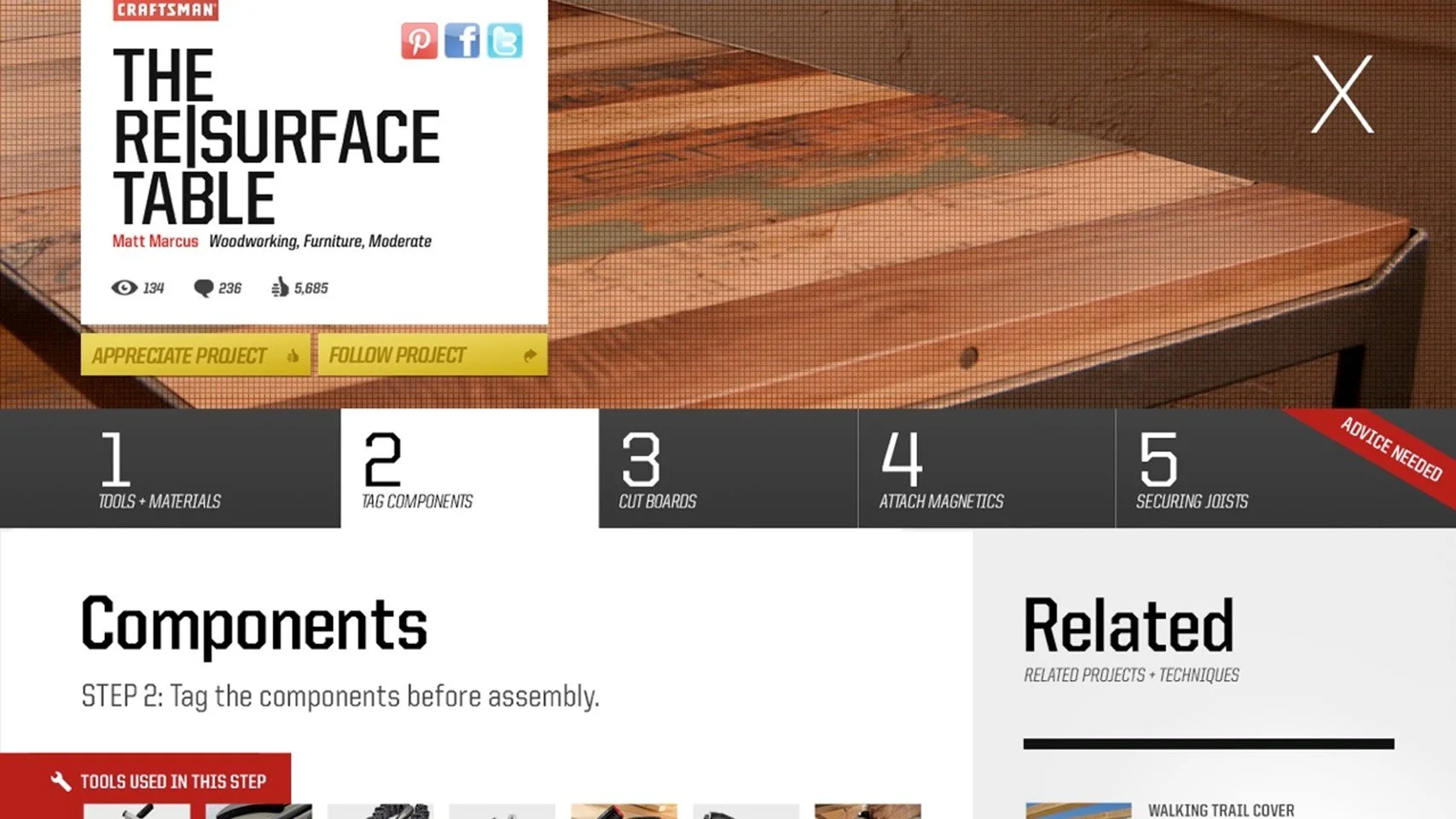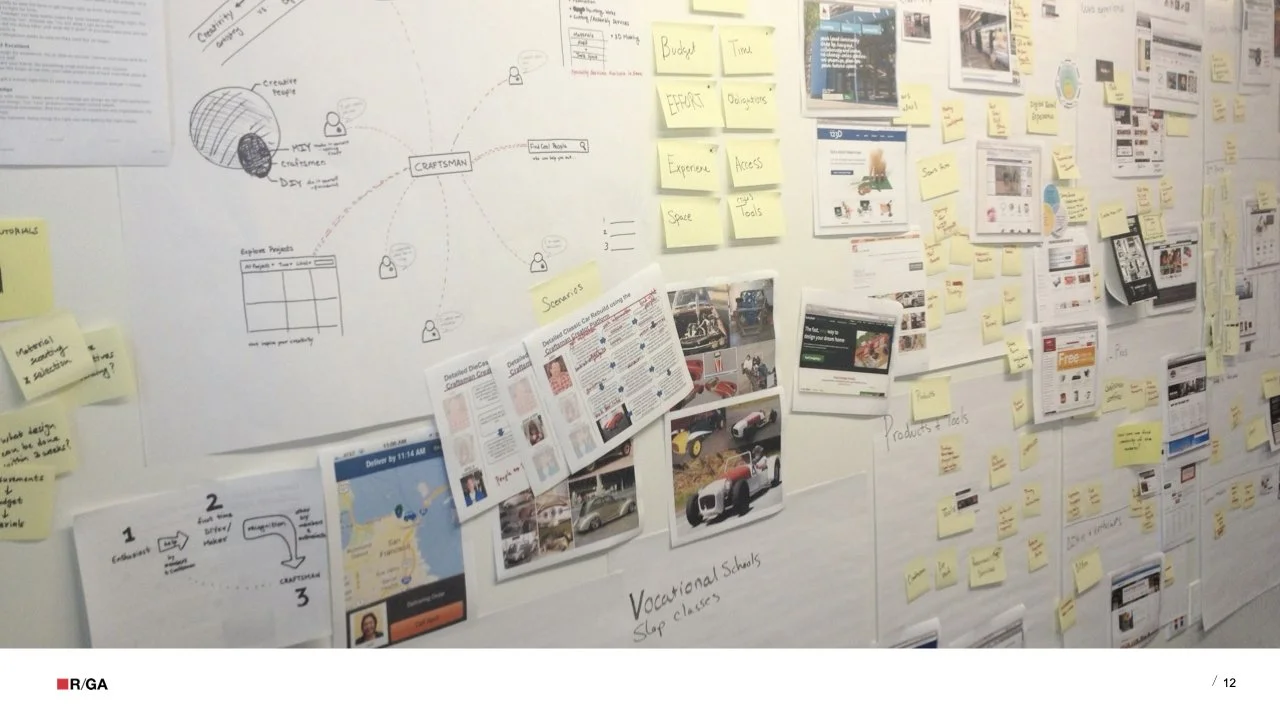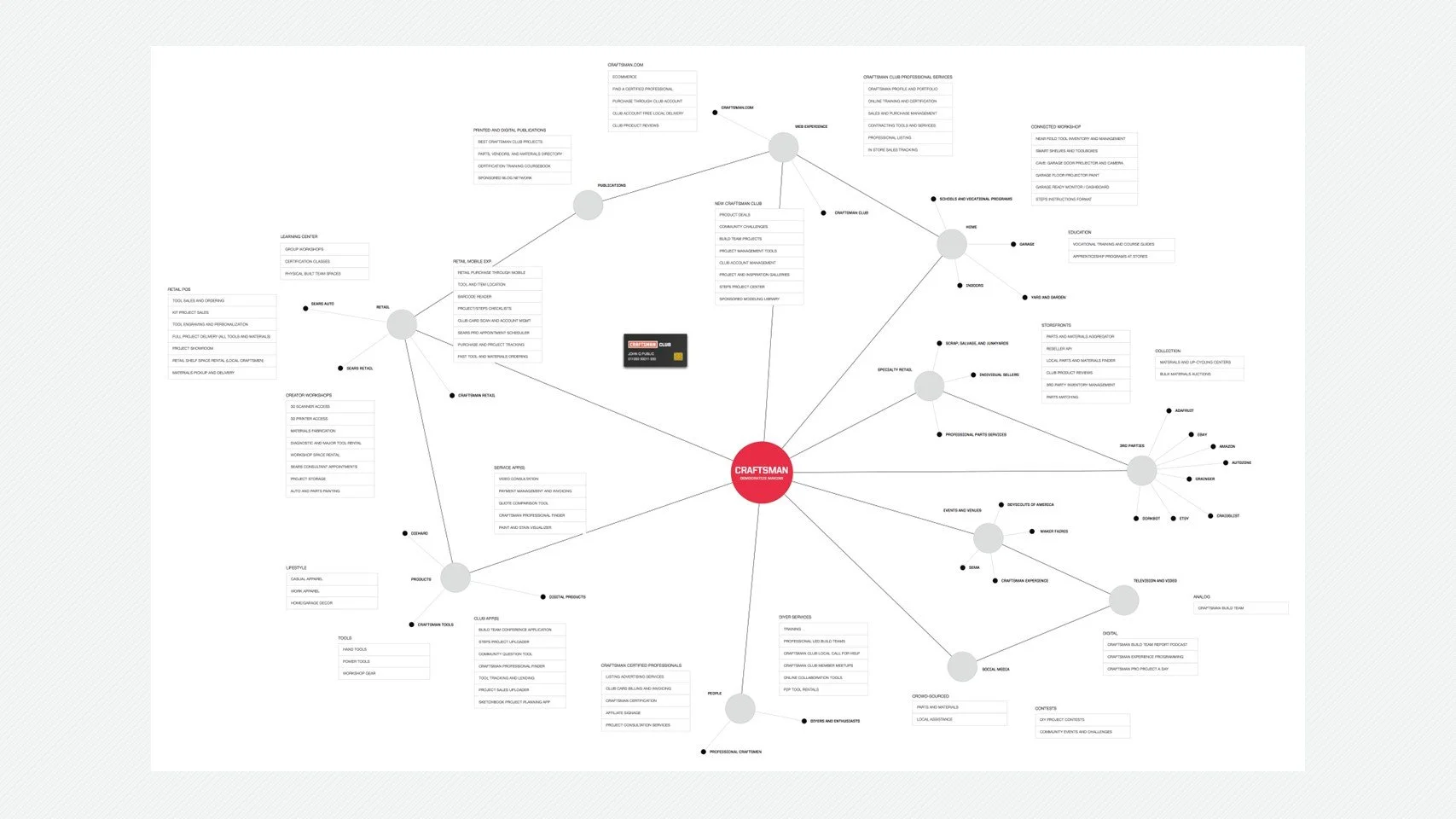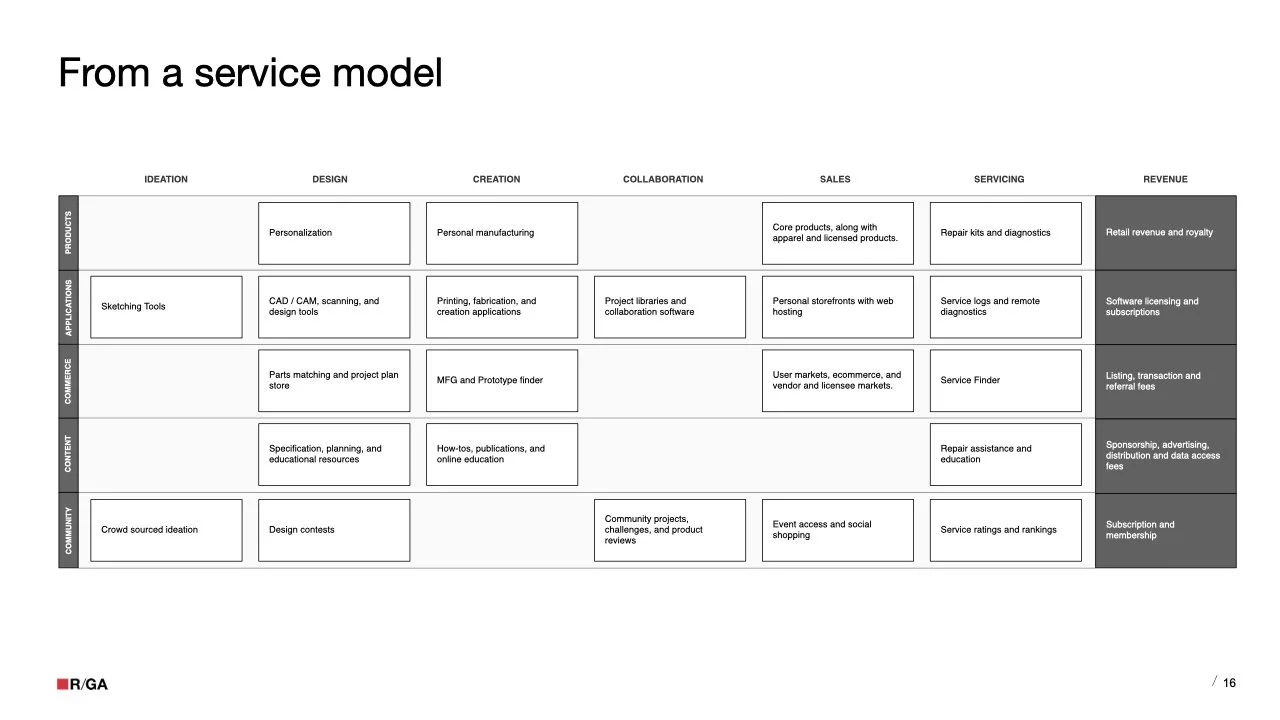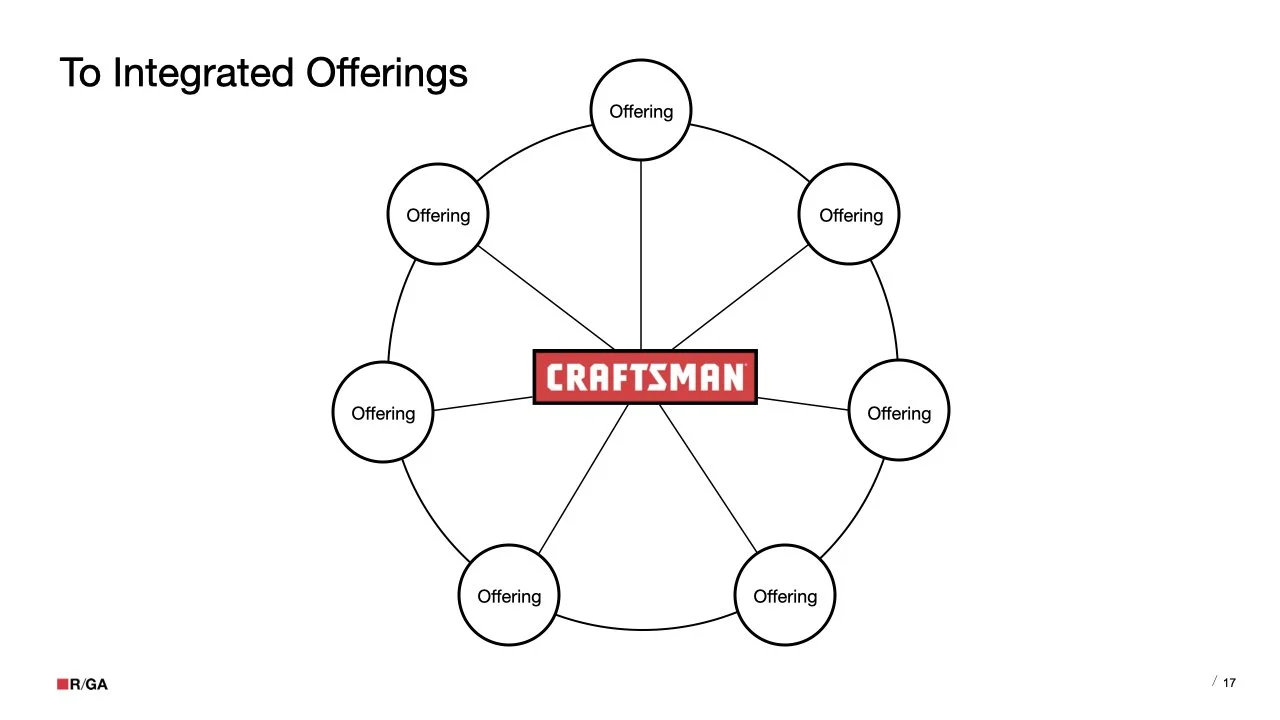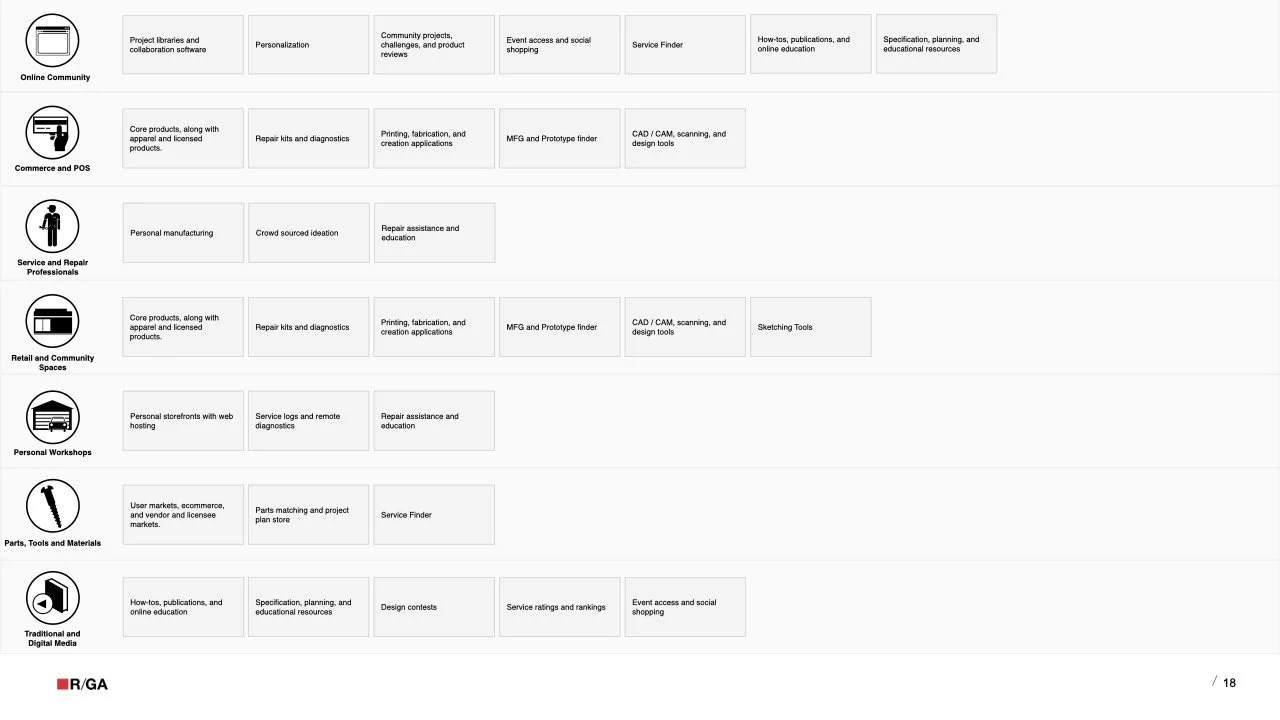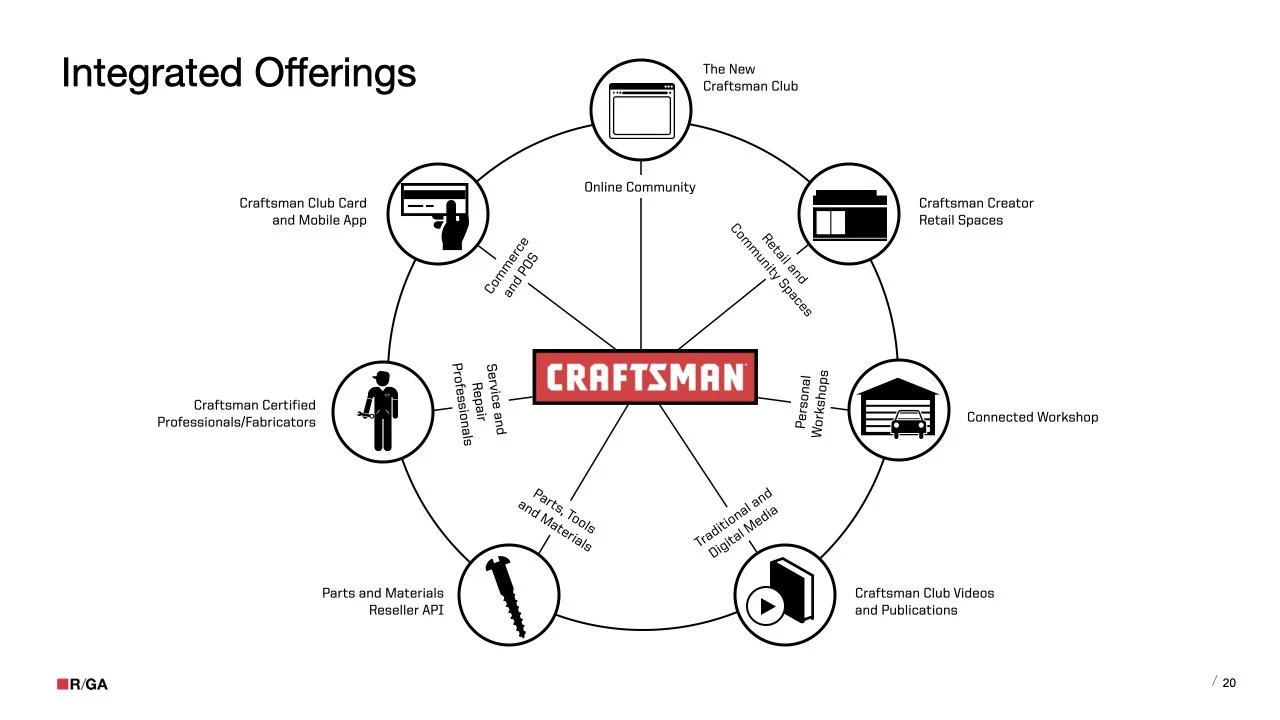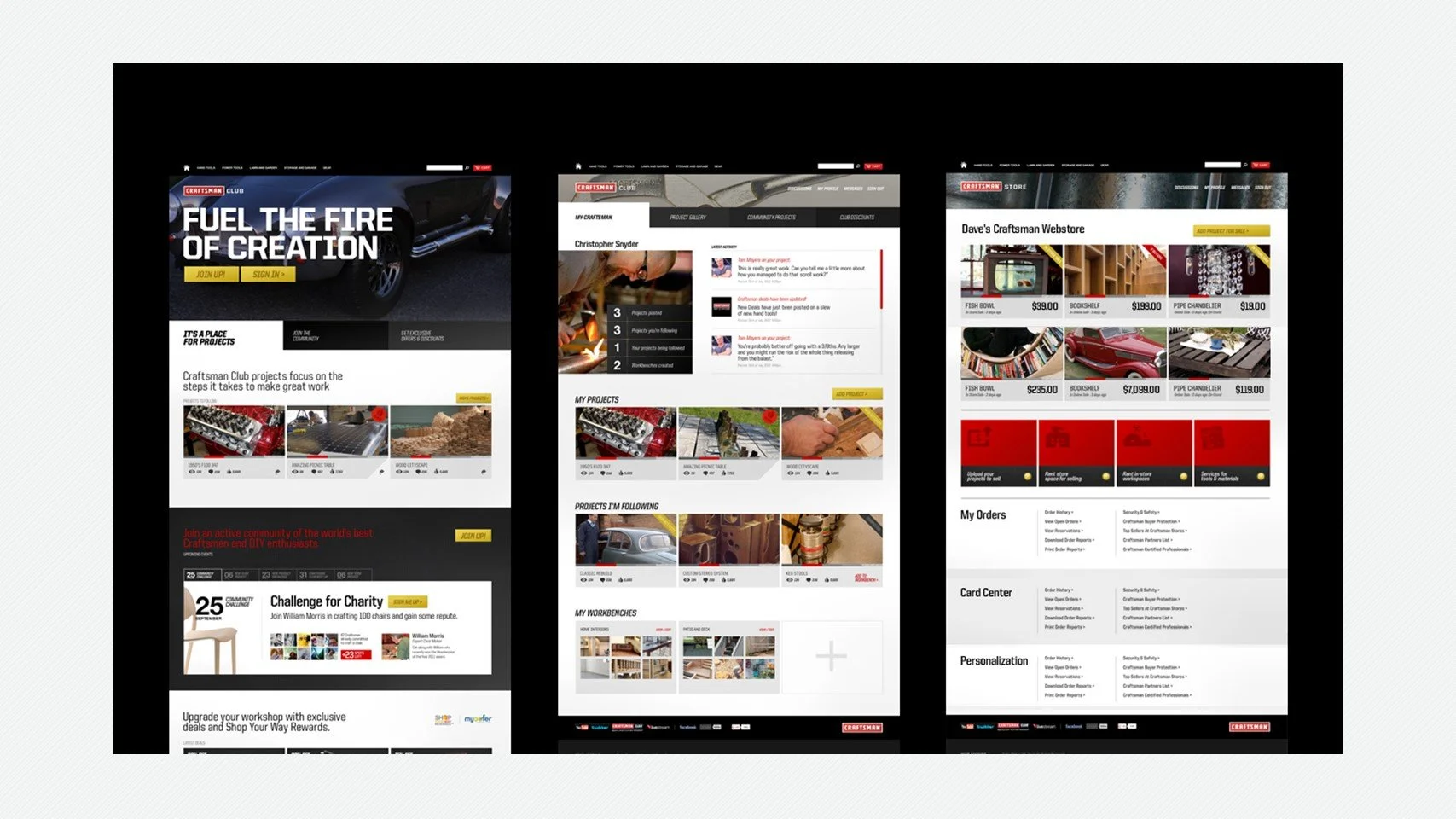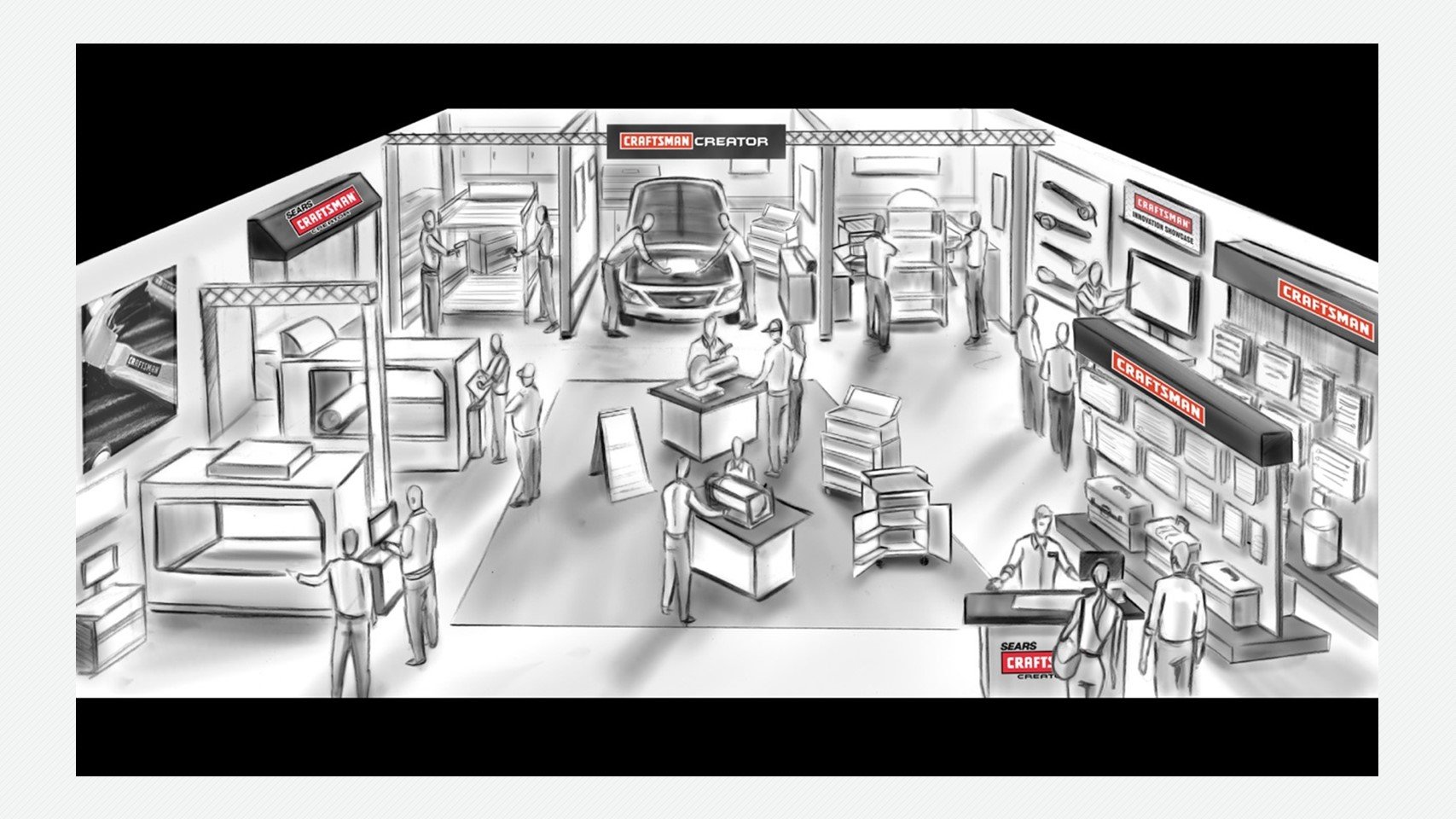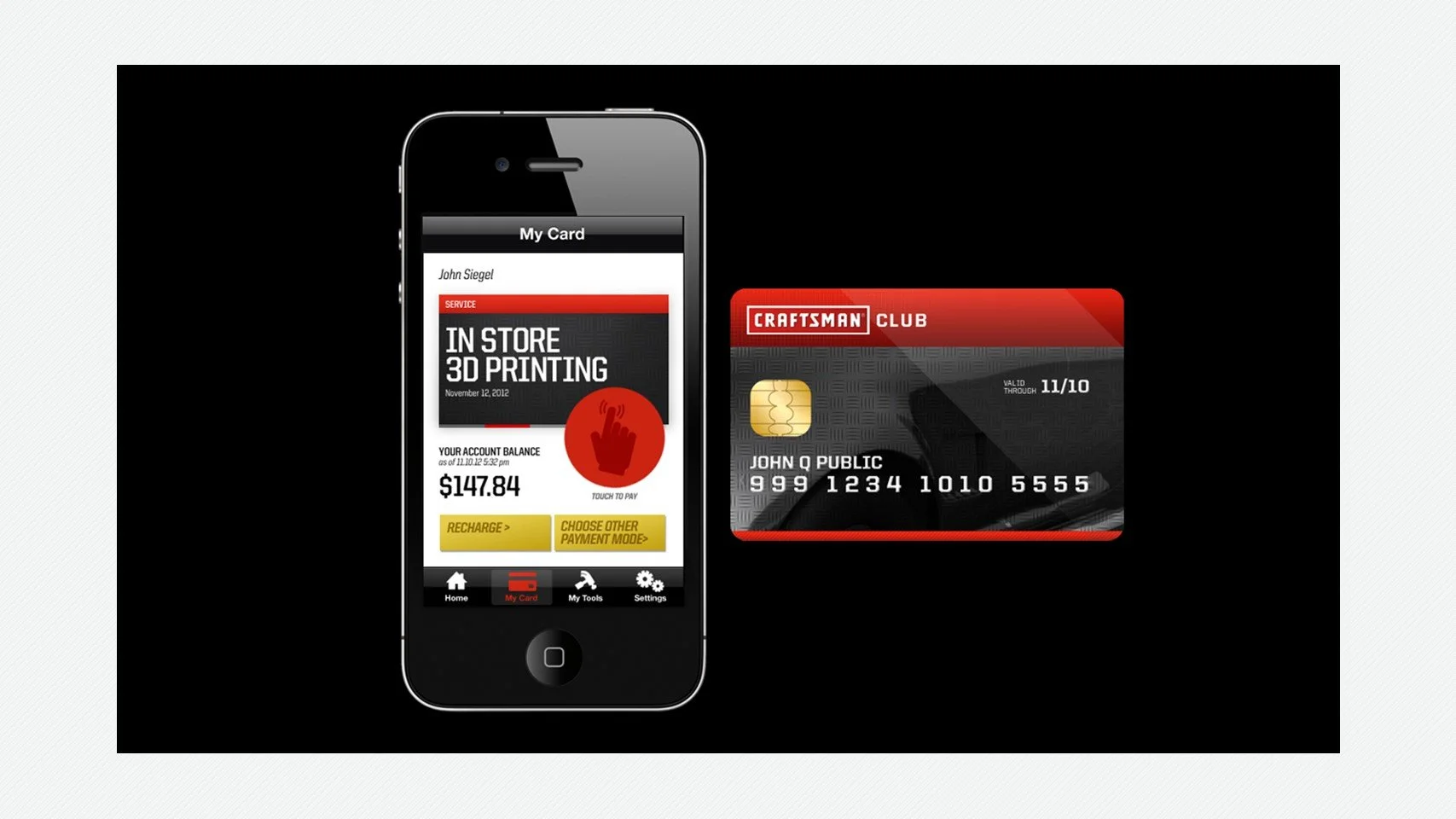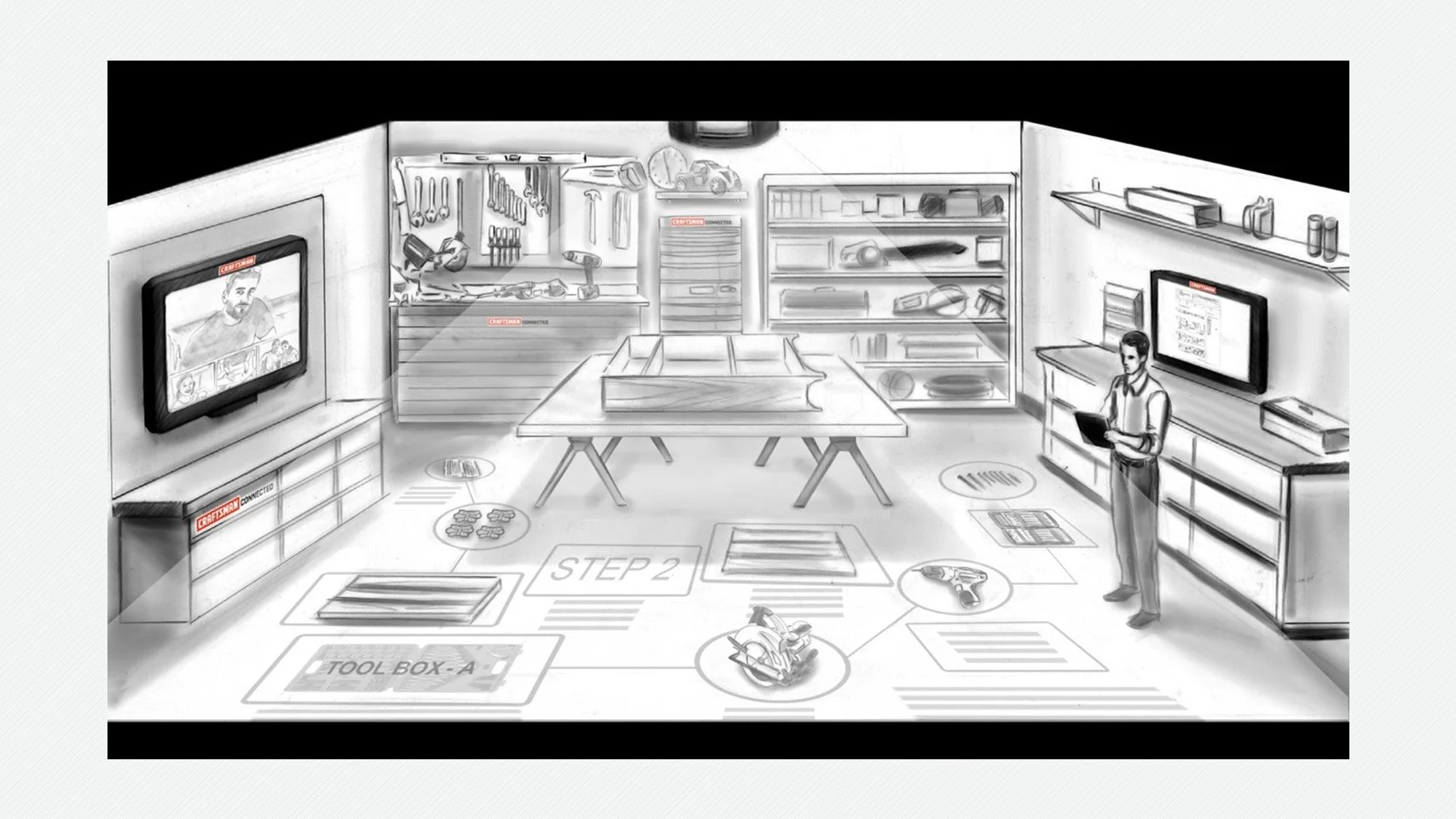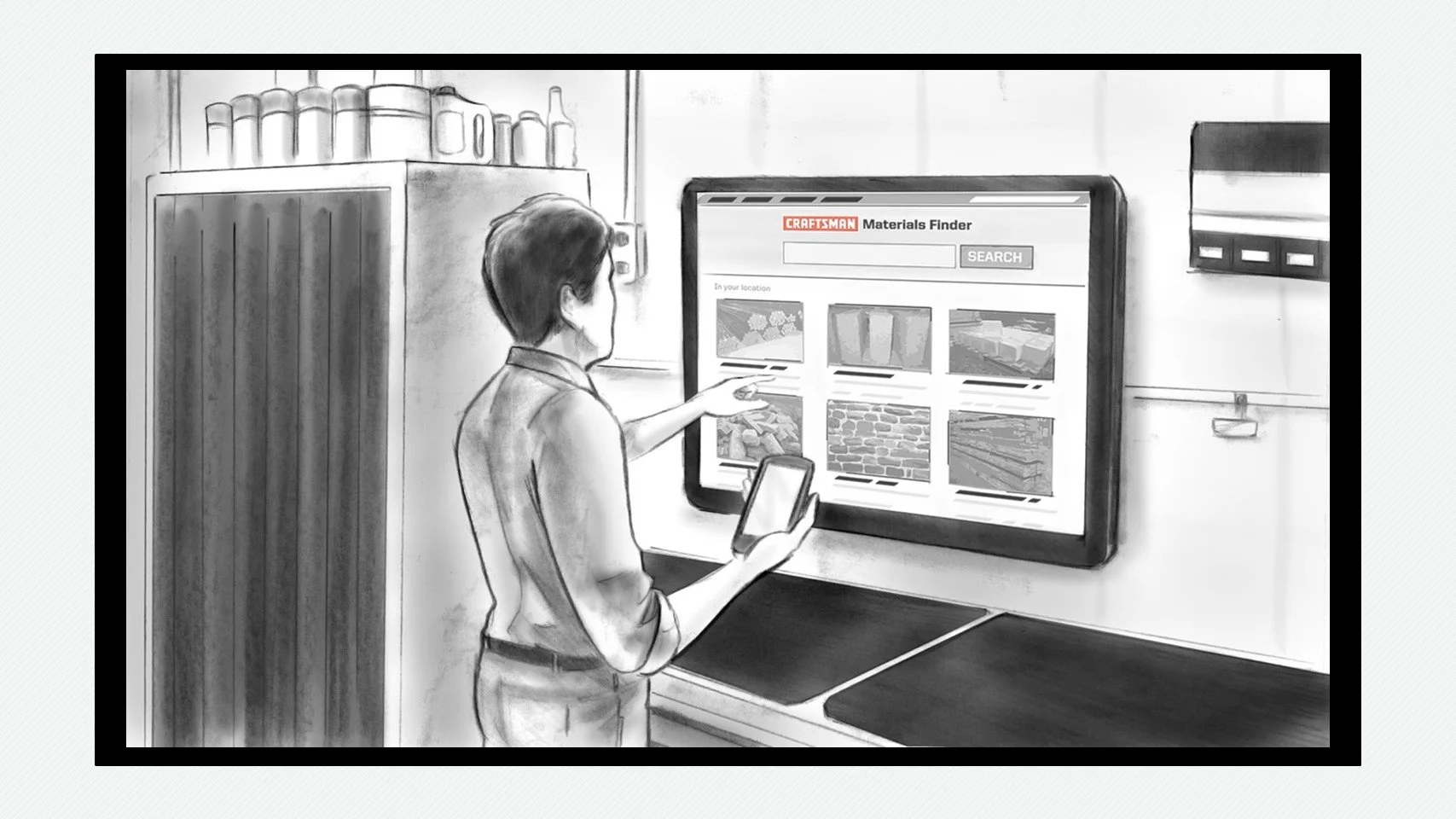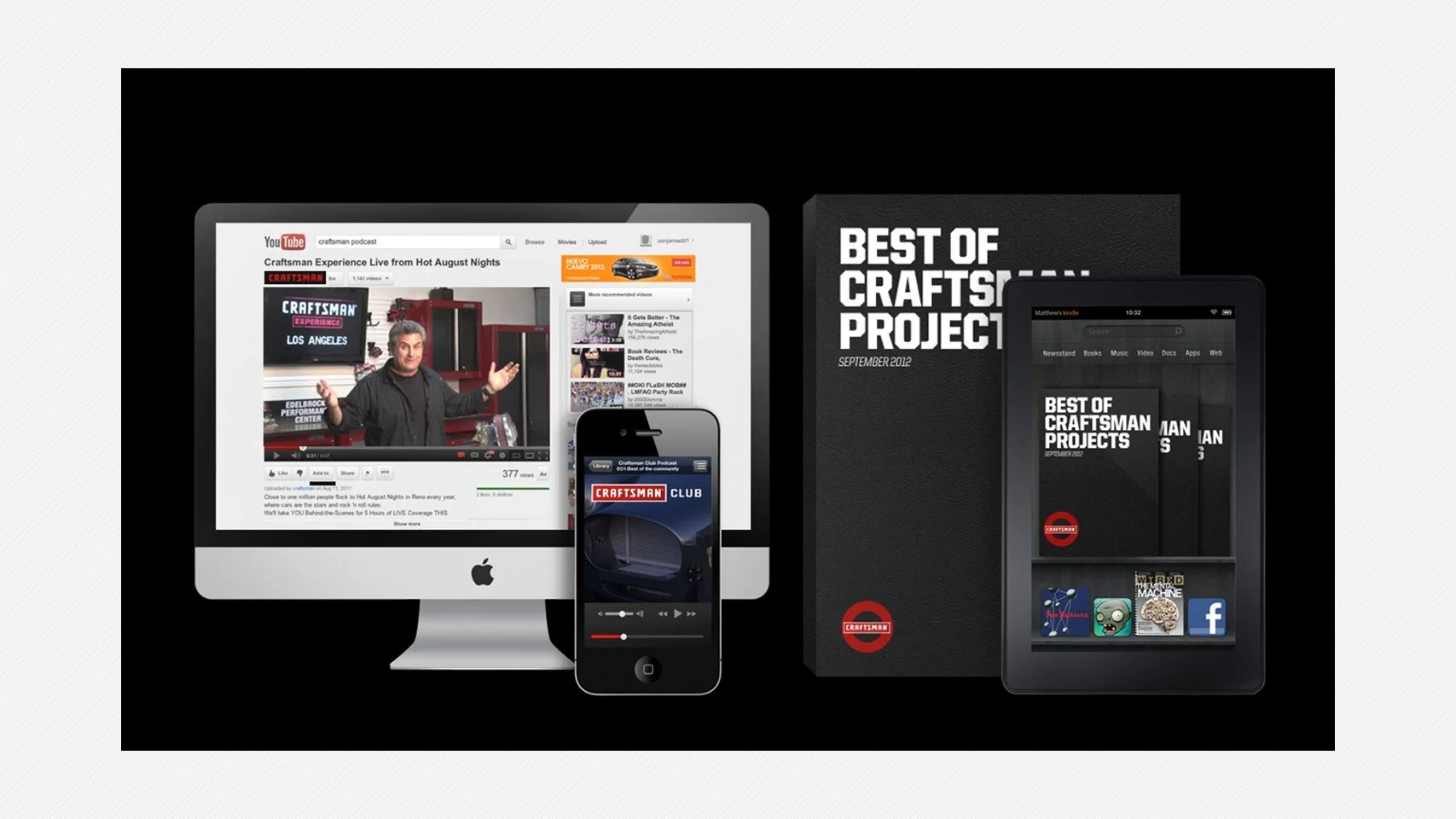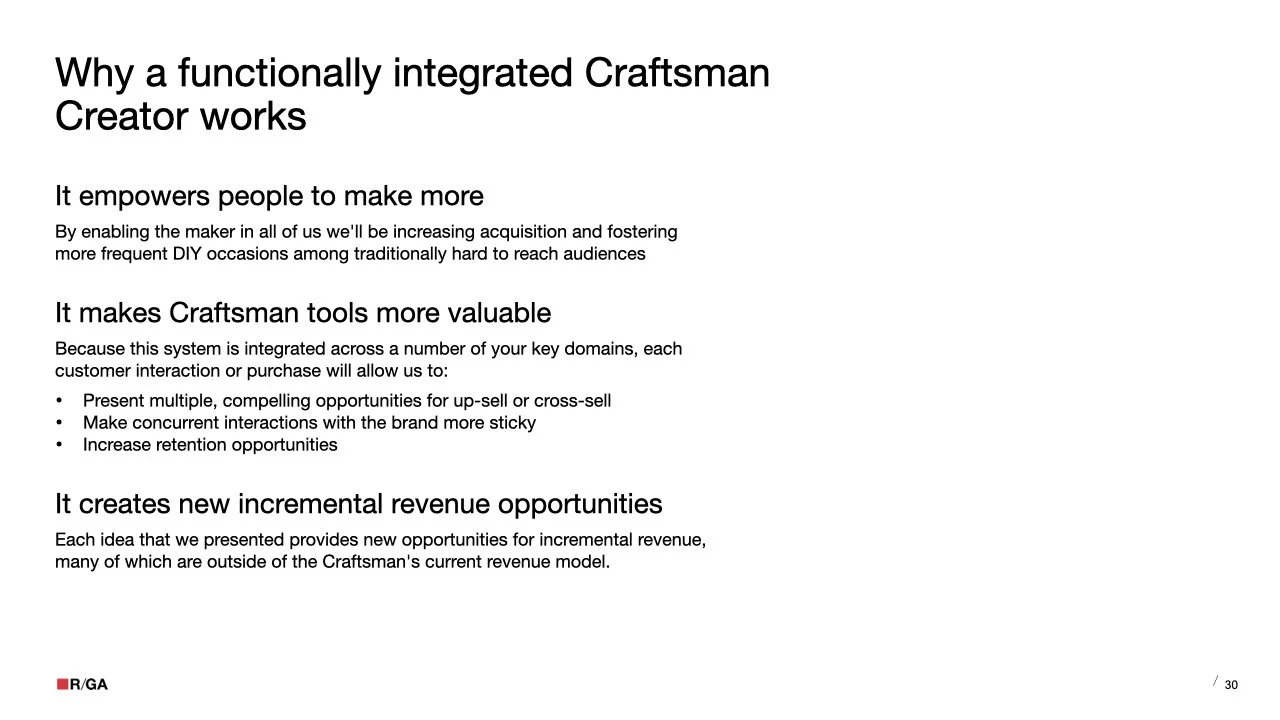Craftsman Club
Craftsman Club was a social platform that I helped concept and design while at R/GA. The goal of Craftsman Club was to take their existing, and very popular, forum for tools and DIY and transform it into a property that was both better suited to the types of conversations they wanted to support, and better able to generate content that could be leveraged in other areas of the business. The project’s success led to additional work concepting different extensions that the team could take on in the future.
What were we solving for
The Craftsman forums were popular a popular place for builders, makers, and other tool enthusiasts, but it was expensive to maintain and moderate. Furthermore, while the company saw a lot of value in the audience that they were able to establish, and the connection that tying such a vibrant community had with their brand, they weren’t seeing the types of behaviors that you would normally associate with maintaining the space as a sustainable program; Topics were generally off-topic, tool discussion typically featured products outside of the scope of Craftsman, or even Sears, and many of the analytics they were able to capture didn’t paint a good picture around conversion to either purchase, or their Club Card… which the forum was centered around.
Not wanting to shutter the property, or displace the existing community, Craftsman came to R/GA asking for help in repositioning the forum into a space that would still retain everything that folks thought was great about the current space, but do it in a more sustainable, profitable and brand effective way. As the systems lead for the project, my role was to define the strategy that would get them there, and define the system that would make it possible.
Goals
Refocus the conversation towards Craftsman products and services.
Increase community participation and activity, particularly in areas of value to the brand.
Focus conversations more on core target areas.
Increase Craftsman Club Signups.
Increase conversion to e-commerce.
The work
Planning and Discovery
The team started initial discovery with three activities, a forum topic focused on improving the community, interviews with high engagement posters, and a secondary audit of other spaces dedicated to making, craft, and DIY. In many of the interviews and forum conversations dedicated to what made the space special we would get a mix of responses… some liked the space as a way to show off accomplishments, others to gain better mastery and learn from experts, others just liked being in a space with like-minded people. The one thread that was common in all of these antecedent outcomes was that they generally centered around projects. Individual projects were essentially acting like their own miniature gathering spaces for smaller groups of folks to commune, generally in a mix of on and off topic ways. As we learned more from the community it became fairly clear to us that, for the community to succeed, we would need to make these spaces central to the design strategy.
Foundational Design
Given the core nature of projects to both the strategy and, very likely, architecture of the redefined space, the team wanted to build the experience in a way where projects weren’t just a core focus of the content and structure of the experience, but also a key part of the way that community members would interact with that content in practice. Projects are largely procedural activities, where expertise and resources can have a significant effect on the breadth and dynamism of those activities at a certain level of detail, but go high enough and things tend to follow common approaches. We wanted to reflect this dynamic in the new experience, and so we eventually came up with Steps–the core interaction model for the new experience.
Creative execution
The creative team had the challenge of coming up with a core experience that, not only spoke to the Craftsman brand and overall manifesto, but did so in a way where the large amount of community content making up the space would fit in as well. The team spent a lot of time coming up with filters, overlays, and other stylistic tricks to ensure that every piece of content would speak to the Craftsman Club story, regardless of where it was coming from.
This is the final visual for the unauthenticated home page experience. The approach leveraged existing Craftsman branding and focused on forms that elicited feelings of precision. That sense was used as a counterbalance to a lot of the work in progress that was featured throughout the experience.
Outcome
The new forum launched around the middle of 2013, and the initial response from the community was very positive; not surprising since we were running most of our work-in-progress through the community as we were designing it. Outside of sentiment, the two metrics we were closely tracking, Club sign-ups and Conversion began moving closer and closer towards the company’s forecasted targets. Given the success of the space, the team at Craftsman asked us to expand on the concept a bit more. They were interested in getting an idea of the types of adjacencies to the new space they could move into. What would it look like if they functionally integrated the Craftsman Club with some of the other elements in their ecosystem?
This is a high level overview of the input we gathered throughout the Craftsman Club project.
Outcome
The Craftsman club forum remained a fairly successful property for Sears in the years following it’s launch and, while many of the more future facing concepts never made it to the point of funding, some of the lighter weight ideas did get launched. The pushback in investment largely came as Sears started running into financial difficulties with their physical retail spaces and, as a result, started selling them off across the country. That said, the Craftsman Club still exists as an entity within Craftsman’s storefront, which has, in a lot of ways, shifted to reflect a lot of the design approach we originally pulled together for the Craftsman Club.


